




Maj Gen Dr A R D Sharpe Director, CHACR
Throughout the force development discussions of the last 20 years (and no doubt much longer than that), the staff officers and decision makers engaged in the process have addressed in their labours, findings, recommendations, and solutions a well-thought-through series of second-order answers to second-order questions. How many corps should the British Army have, or divisions, or brigades? How many brigades should there be in a given division? What units (those timeless military building blocks), and combinations of units, will constitute those ‘formations’? What is the right role for a Division? How many Divisions do we need? (Or how many can we afford, so how will we use what we can afford to best effect?) Is it at Corps or Divisional level that the clichéd ‘full orchestra of war’ gets to play? In all of these debates, while the number, size and structure of these military formations have been examined and debated, their very existence as a useful vehicle for organising an army has not. The existence of the military formation (‘Corps’, ‘Division’, ‘Brigade’) as a concept, and, by extension, the options for their utility, has been taken as an almost unmentioned assumption. And this has been a ‘given’ pretty much since the Napoleonic wars. In this rapidly changing century, where so many of the old ‘givens’ are coming under scrutiny, this Ares & Athena asks the reader to consider some first-order questions about the whole notion of ‘military formations’.
For much of the history of war the term ‘division’, when applied to the formational structure of an army, was merely a noun based upon its verb-root. In other words, at random shapes and sizes, an army was ‘divided’ into ‘divisions’ to suit the tactical, practical, control or leadership expediencies of each unique set of tactical or operational circumstances. The word ‘division’ did not automatically conjure up in a military mind a standard formational model. For much of military history there was no commonly understood formula for a ‘division’. No set and standard wiring diagram leapt into the military subconscious when the word was used. The term simply meant that the task confronting the fielded army required it, for today, for now, for this battle, to be divided up into divisions to deal with the circumstances of the day.

“You lot will do this, and you lot will do that.” This was TaskOrganisation at its purest – of the moment and according to the problem in hand, as often as not on the side of a hill having seen what was arrayed before you, having done a quick and intuitive combat estimate and issued instructions to the beplumed body of staff and generals standing or seated on horses around you. And this meant that the term ‘division’ was as often as not, only applied after an action had been fought, in order to describe how a commander had split up his forces and allocated their tasks to deal with the fight of the day.
Post-Napoleonic European reforms and, ultimately, the First World War, have, however, given the word not only a capital letter to make it a formal formational title, but also have delivered a fairly universal understanding of the sort of wiring diagram that ought to come with the use of the word on an order of battle. And this has set itself in military minds despite the wildly different realities of the various actual ‘Divisions’ on the ground (whether through national differences, functional differences, national smoke-and-mirrors to meet international commitments, or, simply, attrition by combat causing a difference between map-room perceptions and physical realities).
The French Revolutionary and Napoleonic wars also delivered to western, and then global, military thinking the concept of the Corps – the operationally manoeuvring allarms mini-army. They also formalised, at least in European Continental models, if not in the stubborn minds of British soldiers, a common understanding of the term Regiment and, below that, Battalion. The catch-all military term ‘company’ (which, originally, simply meant a group of fighting men of whatever size could be appropriately mustered, from tens to thousands), also took on a specificity, as did the term ‘captain’, which ceased to mean simply ‘the person in charge’ (of a company, or endeavour, of indeterminant size), but became associated with the leadership of a now-determined-in-size company (which is why most armies in the world, standfast again the stubborn British, still have their companies commanded by captains).
But, and it is a significant ‘but’, the language of the force developers is increasingly removing traditional meaning from these accepted understandings of what is contained, in theory and on paper, within these given units and military
How many corps should the British Army have, or divisions, or brigades? How many brigades should there be in a given division? What units, and combinations of units, will constitute those ‘formations’? How many Divisions do we need? (Or how many can we afford, so how will we use what we can afford to best effect?)
If we were starting from scratch designing our armies on a blank sheet of conceptual paper, instead of inheriting our piece of paper over-written multiple times over the passage of years and centuries, would we default to this formational Order-Of-Battle-filling exercise?

formations. Technology, tactics, techniques, procedures, doctrine and concepts are using the terms increasingly loosely. Is a 21st century Brigade Combat Team, for example, anything like a Napoleonic, or, for that matter, World War Two brigade, in terms of numbers of people, or of units, or of variety of composition, or of command relationships with other formations, or of doctrinal application, or capability, or area of responsibility, or any other of a myriad of relevant questions and circumstances? Or, likewise, division? Or corps? Is our long-accepted broad understanding of the nature of these formations helping us or constraining us? If we were starting from scratch designing our armies on a blank sheet of conceptual paper, instead of inheriting our piece of paper over-written multiple times over the passage of years and centuries, would we default to this formational Order-OfBattle-filling exercise?
This Ares & Athena will, therefore, examine whether the march of task and technology, and its influence on the character of traditional units and formations, is such that this widely accepted (and applied) method of structuring, measuring, organising, task-organising, and delivering the physical component of fighting power is still useful and relevant. Or, is now the time for a really dramatic re-think in this respect? As usual, we offer no answers, but, at a time of such change and against a background of ever-developing threat, this first order question is, surely, worth asking.
Introduction
The historical evolution of corps and division in the British Army
Meeting the challenge of the 21st century land domain
Would Napoleon recognise his corps’ invention 220 years on?
The changing German Army structure
Capabilities first. Structure second
The British Army’s divisions and corps at war in the 20th century

Published by:
Centre for Historical Analysis and Conflict Research, Robertson House, Slim Road, Camberley, Surrey GU15 4NP. Tel: 01276 412708/412660 chacr.org.uk
CHACR business partner: QinetiQ Training & Simulation Ltd (formerly NSC), Cody Technology Park, Old Ively Road, Farnborough, Hants. GU14 0LX Ares & Athena © CHACR 2024

Dr Paul Latawski Department of War Studies, RMA Sandhurst
For more than two centuries the corps and division have been an important part of the British Army’s order of battle and a major factor in its warfighting success. From the Napoleonic wars to the Boer war, the corps and division were somewhat ephemeral military entities insofar as they only existed in the British Army in wartime. By the 20th century, the corps and division were on their way to becoming established formations in peace as well as war. The corps in the period of the two world wars between 1914 and 1945 remained a formation raised in wartime, but during the Cold War found a permanent place in the Army’s order of battle. The division, however, enjoyed greater permanence as it became an established part of the British Army in the run-up to the First World War and has been part of the order of battle ever since. Without a doubt the world wars of the 20th century provided the British Army with a substantial body of wartime experience that decisively shaped the conceptual foundations in the employment of both corps and division in the British Army. The core of this operational experience was against peer adversaries in conventional warfighting. Although the first half of the 20th century was central to the development of these formations, in the broader sweep of the last two centuries, the British corps and division did in fact operate in multiple environments and against a range of conventional
From this historical experience, what discontinuities and continuities can be identified in the more than two centuries of the corps and division in the British Army until the end of the Cold War?
In the British Army, the corps and division entered the order of battle later than in continental European armies. Sir John Moore’s operations against Copenhagen in 1807 saw the earliest employment of a divisional organisation in the British Army. It was the Duke of Wellington, however, in the Peninsular campaign, who established the division as a standard formation in the British Army structure. On 18 June 1809, Wellington created one cavalry and four infantry divisions.1 Between 1809 and 1814 Wellington employed a maximum of ten divisions in the Peninsular campaign. His ten-division force was made possible by incorporating a Portuguese brigade in seven of his ten divisions and for a time into an eighth division.2 The integration of Portuguese brigades was pioneering as it created for the first time Britishled multinational divisions. Wellington also established the Army’s first corps on the eve of the battle of Waterloo by mixing Hanoverian, Dutch and Belgian troops with their more experienced British counterparts. This first British Army corps did not function as a tactical entity as Wellington controlled his divisions directly and had multinational integration as the main reason for its existence.

The remainder of the 19th century saw divisions employed in only a few conflicts: the Crimean War 1853-1856, intervention in Egypt in 1882 and the Boer War 1899-1902. The British Army fielded six divisions in the Crimean war, in Egypt three divisions and in South Africa one corps and 12 All of these divisions existed only for the duration of the conflict. These 19th century wars were limited conflicts in terms of geographical scope and scale. Without the driver of a general European conflict which would have required British Army structures more akin to other European powers, the place of the corps and division was more the subject of discussion rather than action. As early as 1852, Prince George, the Duke of Cambridge, argued for the introduction of a ‘divisional system’ integrating
General Orders: Spain and Portugal: April 27th to December 28th, 1809, Vol. I, (London: 1811), pp. 70-71.
Malyn Newitt, ‘The Portuguese Army’, in: Gregory Fremont-Barnes (ed.), Armies of the Napoleonic Wars, , (Barnesley, South Yorkshire: Pen and Sword Military, 2011), pp. 221-222.
Material on nineteenth century drawn from research for Part 4 A Historical Perspective of the Division in the British Army’ by Dr Paul Latawski, Department of War Studies, Royal Military Academy Sandhurst in: Army Field Manual Volume 1 Part 1A Divisional Tactics, June 2014.
At the outset of the First World War, the British Expeditionary Force started from the modest base of only one shadow corps headquarters and seven divisions in its order of battle to expand by war’s end to a force that at its maximum extent numbered 28 corps and 85 divisions
all arms in the formation.4 By 1875, the division entered the Army organisation, albeit on paper, as the division and corps became part of mobilisation arrangements for the Army. This reform was the result of the influence of the Prussian Army’s campaigns in the 1860s and 1870s which saw the efficient mobilisation of large formations for war.5 In the case of the corps, the memorandum of Edward Stanhope, then Secretary of War, defined the role of the British Army and the creation of two (paper) corps for home defence with one of the corps to be deployable overseas. This would eventually evolve following the Boer War into six Army corps commands with geographical areas assigned to be the basis of mobilisation of the corps.6
Stanhope’s mobilisation scheme would be tested by the outbreak of the second Boer war (1899-1902). Although passably successful in assembling the formations for service in South Africa, the real challenges rested in their employment. The British Army’s insurgent Boer opponents precluded the singular corps and the 11 divisions from operating as complete tactical entities in a conventional force-on-force manner. Instead, these formations served in an area security role that presaged some of the post Second World War insurgencies. The character of the conflict in South Africa led to a span of command problems caused by corps commanders not utilising divisional headquarters and struggling to control myriad lower-level formations and units.7
Overall, the South African war represented a culmination in the development of the corps and division in the 19th century. The shortcomings of this British formation model persisted throughout the 19th century and into the early years of the 20th century. The weaknesses of this model stemmed from the fact that the corps and division were not standing organisations but sprang to life only at the outbreak of war. With each conflict the corps or division was thus an
4‘Observations on the Organisation of the British Army at Home’, December 1852. Document in: Col. Willoughby Verner, The Military Life of H.R.H. George, Duke of Cambridge, (London: John Murray, 1905), p. 39. See also Giles St. Aubyn, The Royal George 1819-1904: The Life of H.R.,H. Prince George Duke of Cambridge, (London: Constable, 1963), pp. 57-58 and Hew Strachan, Wellington’s Legacy: The Reform of the British Army 1830-54, (Manchester: Manchester University Press, 1984), pp. 160-161.
5A. W. Preston, ‘British Military Thought, 1856-1890’, in: Raugh Jr. (ed.), The British Army 1815-1914, (Aldershot: Ashgate: 2006), pp. 383-384.
6John K. Dunlop, The Development of the British Army 1899-1914, (London: Methuen, 1938), p. 307 and 314.
7Testimony given by Maj Gen Sir H. E. Colville on 26 February 1903 in: Minutes of Evidence Taken Before the Royal Commission on the War in South Africa, Volume II, CD. 1791, (London: His Majesty’s Stationary Office, 1903), p. 289 and 294.
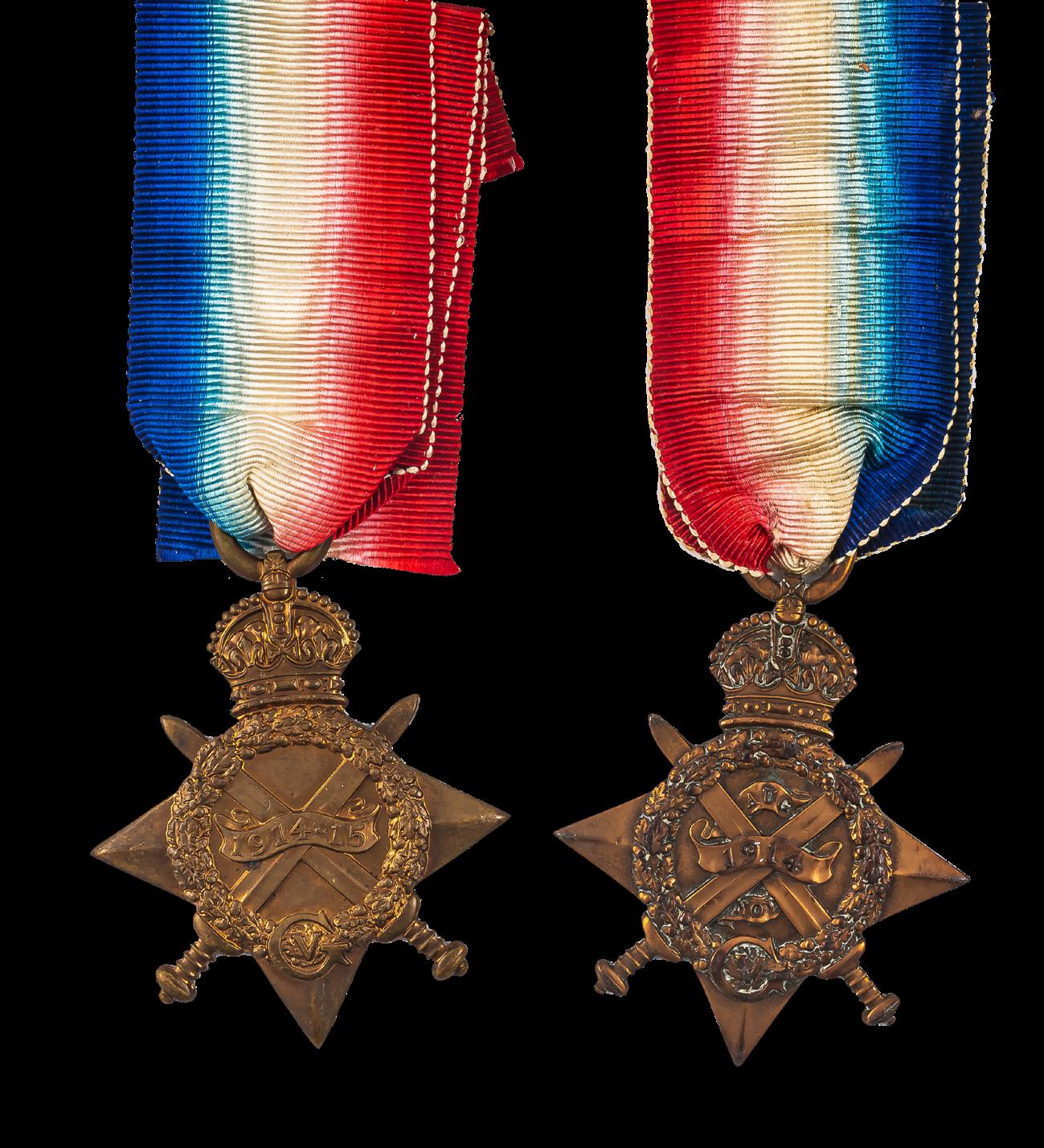
identical 1914 Star (above right) was presented to those who served in Belgium and France between 5 August and 22 November 1914.
operational reinvention. The British experience of the 19th century in terms of the development of the corps and division was a story less of innovation than of belated emulation of wider European military trends regarding the organisation of armies. The experience of the Boer war, however, set in train reforms in the British Army. Richard Burdon Haldane, who became the Secretary of State for War in December 1905, established six large infantry divisions and one cavalry division as a permanent peacetime formation. These regular divisions would be augmented in wartime by the mobilisation of 14 divisions of the new Territorial Force.8 Under the Haldane reforms, however, the corps remained something to be improvised after the outbreak of war.
World Wars 1914-1945
The period of the two World Wars saw unprecedented wartime expansions of the British Army making it comparable to other major continental European powers. This in turn led to the numbers of corps and divisions growing enormously in line with wartime force expansion. At the outset of the First World War, the British Expeditionary Force started from the modest base of only one shadow corps headquarters and seven divisions in its order of battle to expand by war’s end to a force that at its maximum extent numbered 28 corps and 85 divisions (excluding Dominion and Imperial formations). After an interwar interlude where once again the corps disappeared, the divisional numbers were reduced to four and then later five peacetime regular divisions with territorial divisions numbering 14 and – by the 1930s – 12. The British Army’s rearmament programme saw the number of divisions increase by September 1939 to two armoured, seven regular infantry and 24 first- and secondline territorial divisions upon which to build the wartime
8Edward M. Spiers, Haldane: An Army Reformer (Edinburgh: Edinburgh University Press, 1980), p. 81 and 106.
force. The British Army would eventually raise 14 corps and 46 divisions – augmented with the Dominion and Imperial formations – in the Second World War.9
The First World War triggered major development of the operational responsibilities of both the corps and division in the British Army. At the onset of the war the corps served as an administrative entity and controlled a limited range of corps assets. As the war progressed, however, assigned corps troops grew in number including engineer, signals, logistic and other specialised units. It would also in due course have a role in air-land integration as it acquired observation and reconnaissance capability. The shift to indirect fire during the First World War gave the corps a critical function in delivering more sophisticated fire planning for the utilisation of firepower resources on the battlefield.10 In the course of the war, the corps acquired control of the artillery brigades with medium guns that gave the corps a significant capability to engage in the deep artillery battle. The composition of corps assets could vary according to the assigned task. The corps exercised tactical command and control over its subordinate divisions and in doing so acquired a key role in the planning and execution of operations.

The
central capability being the command, control and planning of its headquarters. The geographical scope of employment of the corps was wider than in the previous world war. This led to the expansion in the functions in corps operations. In the Burma campaign 1944-45, the corps owned more assets of a kind that typically were held at the army level. The vast geographic distances made this necessary and gave the corps more autonomy of operations in the Southeast Asian theatre. The flexibility of the Second World War corps was also illustrated by the British intervention in the Greek civil war in 1944-45. The III Corps that deployed to Greece had an initial stabilisation mission that morphed into the Corps becoming a theatre wide headquarters covering all of Greece and having under its command a second corps tasked with fighting an urban battle in Athens to suppress Greek communist insurgents.
two world wars saw an enormous number
of corps and divisions raised. For
The First World War represented a kind of military coming of age for the division in the British Army. The biggest change to the division, however, was in its organic firepower. In 1914 the artillery in an infantry division consisted of 76 guns, but by 1918 the number had dropped to 48. On the surface this seemed like a regression, but the artillery did not disappear instead being shifted to centrally controlled units. What is more, the introduction of trench mortars, which numbered 36 in the division by 1918, went some way in offsetting the loss of artillery pieces. The most dramatic increase could be seen in the numbers of machine guns rising from only 24 in 1914 to 400 in 1918.11
the British
Army such scale is unlikely to be seen again.
During the Second World War, the British Army employed a greater variety of divisional types including armoured, airborne, cavalry, infantry and a ‘mixed’ division. The infantry division was the most numerous and enjoyed more mobility through motorisation and possessed more organic firepower. With the increased resources, however, came a major increase in the logistical requirements to sustain the Second World war division. The need for more sustainment was illustrated by the growth in the ‘divisional slice’ which amounted to 40,000 men in total.12 The armoured and airborne divisions were new innovations to the British Army’s order of battle. The armoured division underwent a bumpy road of development with its organisation undergoing nine revisions and its tank strength being reduced to create a better balance between its organic arms. The airborne division was a light scales formation lacking firepower and sustainability as it had to be transported into battle by air.
The Second World War once again witnessed the rapid expansion of the British Army leading to the large-scale creation of the corps and divisions for a global conflict. The function of the corps in the British Army followed the pattern of the First World War with the corps being allocated various amounts of engineering, artillery and specialist armour capabilities that it could allocate to the divisions assigned to the corps. The corps had a critical role in assigning heavy and medium artillery concentrated in Army Groups Royal Artillery. Nevertheless, the assets directly owned by the corps was limited, particularly in the European theatre with its
9Material on the world wars and Cold War is based on research conducted for my chapter entitled ‘The British Corps and Division in the Twentieth Century: Historical Evolution and Doctrinal Context’ in Tim Bean, Edward Flint, James Kitchen, and Paul Latawski, eds., Orchestrating Warfighting: A History of the British Army’s Corps and Divisions at War since 1914 to be published by Routledge in 2024.
10Sanders Marble, British Artillery on the Western Front in the First World War (Farnham: Ashgate, 2013), pp. 67-71.
11A.F. Becke, History of the Great War. Order of Battle of Divisions, Part 2A The Regular British Divisions (London: HMSO, 1936), pp. 7, 25-26, 30, 47-48, 53-54, and 59-60.
The two world wars saw an enormous number of corps and divisions raised. For the British Army such scale is unlikely to be seen again. This period was undoubtedly the most formative period in shaping the corps and division as warfighting formations. This is reflected in a variety of ways including changes to organisation and the creation of a body of doctrine. The corps and division were employed in a variety of theatres and environments during the two world wars. The employment of corps and division was to concentrate force at the decisive point in their operations. Spatially this meant that operations occurred on limited frontages. This was particularly true in the European arena which saw the largest scale employment of the corps and division. Limited frontages allowed firepower to be concentrated on the battlefield. Even in the more fluid and dispersed theatres such as in Burma, concentration at the decisive point still occurred. This reality underlined the importance of the corps and division in delivering battle winning firepower at scale.
The Cold War
The Cold War ushered in a significant dichotomy in the
12Col H.W. Wilson, Administrative Planning (London: War Office, 1952), pp.62 and 181.
type of formations required to meet likely contingencies. In Cold War Europe, the British Army faced a massive Soviet conventional military threat requiring the corps and division to be capable of conventional warfighting to underpin conventional deterrence. The sprawling global British security commitments, however, favoured infantry brigades that had characteristics more suitable for operating in more austere, less developed regions of the world and yet overmatching less formidable conventional or unconventional opponents. By the 1960s, the need for the overseas role of the brigade gradually disappeared, but that of the corps and division continued to the Cold War’s end.
The Cold War saw for the first time the corps made part of the peacetime order of battle of the British Army. The creation of I British Corps in the British Army of the Rhine in late 1951 established a formation that remained in existence throughout the Cold War in Germany – only being disbanded in August 1992. For a brief period, a second British corps (II Corps) was raised during the Suez crisis of 1956. It was from the outset a multinational headquarters integrating French staff officers. Judged a success in multinational integration, II Corps disappeared soon after the Suez crisis was over.13 I Corps remained in northern Germany as part of the British-led NATO Northern Army Group occupying a sector in the ‘layer cake’ deployments that also included Belgian, German and Dutch corps throughout the Cold War. Given the static deployment of I Corps, it controlled on a more permanent basis assets designed to support its subordinate divisions and brigades. The composition of corps troops typically included a mixture of reconnaissance, artillery, air defence, engineer and signals units. As was the case in the two world wars, longer range artillery was a key corps asset for delivering firepower to support subordinate formations.
The British Army retained more divisions after the Second World War than in the interwar period. In the early 1950s the British Army fielded three armoured and five infantry divisions better equipped and not so hollowed out as their interwar counterparts. Most divisions were based in the United Kingdom and Germany with a few deployed to the Middle East and Far East.14 This eight-division total gradually declined and, from the early 1970s to the end of the Cold
War, the British Army consistently fielded four or five active divisions.15 During the Cold War the number of division types gradually declined from three to one. In the wake of the Second World War, the British Army had airborne, armoured and infantry divisions. The airborne division was the first to go followed by the infantry division, which lingered longer because of the utility of its headquarters capability in internal security and counter-insurgency operations that persisted in the wider global arena. By the 1970s, the only division type was exclusively armoured. With increased firepower and effective combined arms organisation, the Cold War armoured division was operationally more relevant to meeting the Soviet threat in Europe. Moreover, growth in its combat capabilities meant that the Cold War armoured division delivered much more combat power than its Second World War counterpart.
The emergence of nuclear weapons on the battlefield during the Cold War had a profound effect on the employment of both corps and division. The corps and division, particularly when their assets were concentrated on the battlefield, were now a vulnerable target for tactical nuclear weapons. On the nuclear battlefield, formation survival required a more dispersed mobile force with redundant command and control capability. This new reality stood juxtaposed to the enduring need to concentrate force density and firepower necessary to defeat the large Soviet conventional armoured threat. The result of this changed threat environment was a conundrum that defied an easy solution if any at all.16
The Soviet threat in Europe was not the only kind of threat faced by the British Army. In November 1956, Britain and France mounted an intervention in Egypt that saw a II Corps established for the operation. Although Suez was a political disaster in military terms the II Corps was seen to have worked well as a multinational headquarters.17 In the
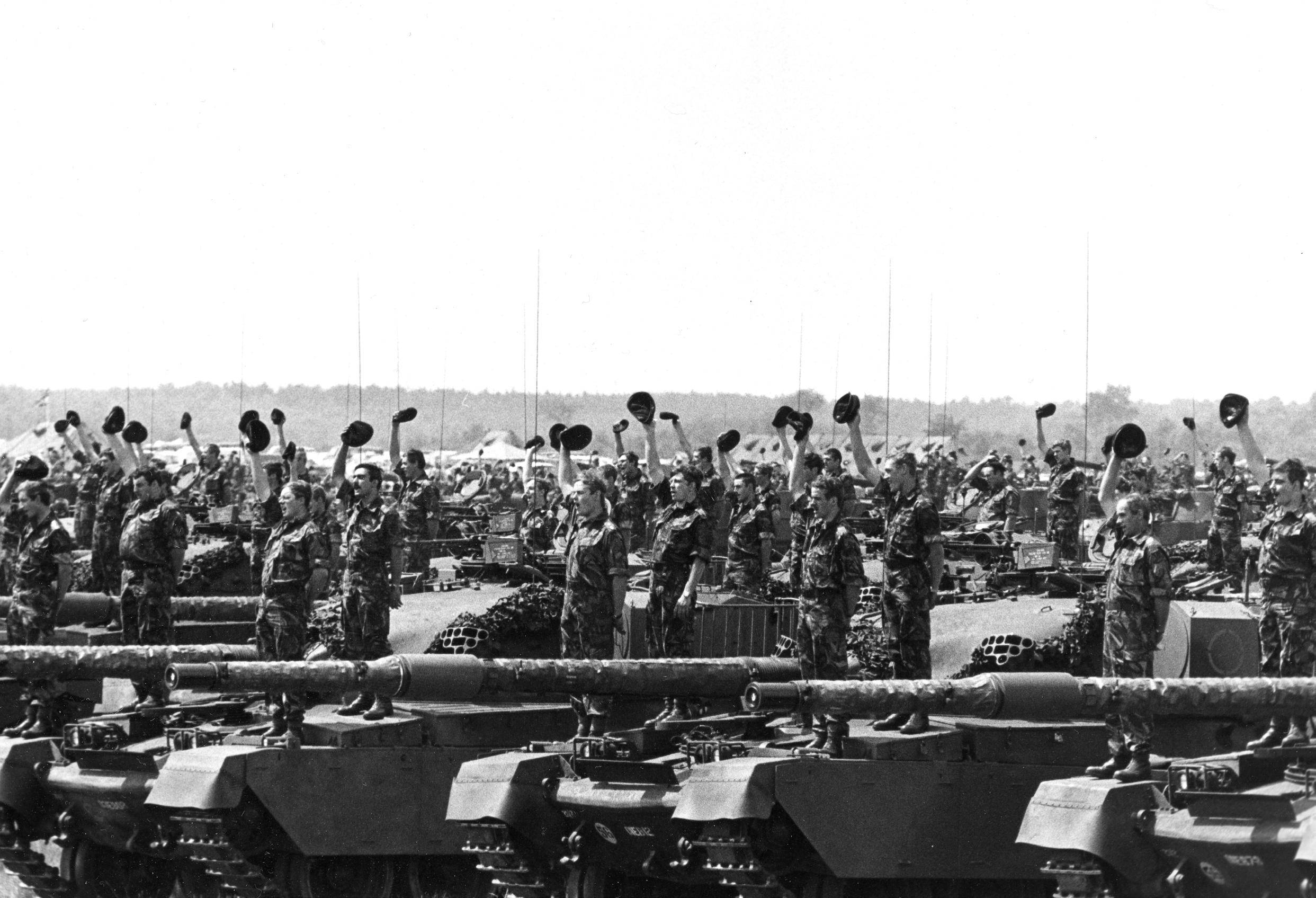
13Stockwell, ‘Report on Operation Musketeer’, Annex B: Lessons and Recommendations, 1 February 1957, pp. 4, 6, and 7, WO288/79, TNA.
14‘Size and Shape of the Armed Forces’, 30 October 1950, CAB129/42, TNA.
15Data on the number of divisions taken from ‘Statements on Defence Estimates’, 1970-83, TNA, and The Military Balance, covering the years 1972-89.
16See: Simon Moody, Imagining Nuclear War in the British Army, 1945-1989 (Oxford: Oxford University Press, 2020).
17Stockwell, ‘Report on Operation Musketeer’, Annex B: Lessons and Recommendations, 1 February 1957, pp. 4, 6, and 7, WO288/79, TNA.
global arena, the British Army repeatedly conducted internal security and counter-insurgency operations. Some of these involved the use of divisional headquarters. In Palestine in the late 1940s, the 6th Airborne Division and the 1st Division served in this capacity with the 17th Division engaged in this role in Borneo in the 1960s.18 The only conventional employment of a British-led division occurred in the Korean War (1950-1953) with the establishment of 1 Commonwealth Division. The Commonwealth Division was the only case of a British-led division being involved in conventional warfighting. Its uniqueness rested on its multinational composition made up of troops from Britain, Canada, Australia, New Zealand, India and South Africa. Moreover, this coalition formation operated within a wider Americanled coalition.19
From the beginning of the 19th century to the end of the Cold War, the corps and division underwent an evolution that saw both formations become established fixtures in the British Army’s order of battle. This journey, however, has both its discontinuities and continuities. The first among the discontinuities is that of scale. In the 19th century both the Napoleonic and Crimean wars saw sizable numbers of divisions fielded. The peak in scale of both the corps and division occurred during the two world wars. The Cold War saw the British Army order of battle possessing a single corps, but more numerous divisions. Contrasting this legacy with the 30-plus years since the end of the Cold War, the British Army was effectively reduced to a single corps (albeit a multinational NATO one) and two divisions of which only one can be realistically fielded at any given time.20
The second discontinuity resides in formation role specialisation. The corps emerged in the two world wars as a formation focussed on the tactical battle mostly in a confined spatial arena with the wider battlespace management the responsibility of army and army group levels. In contrast, the post-Cold War corps not only must be capable of conducting the tactical battle, but it must be reconfigurable to operate in wider operational contexts subsuming a role that earlier would have been the purview of the army or theatre level. In the case of the division, the story is one of multiple divisional types being reduced to a single organisational type. What is more, the single type does not necessarily follow a standard pattern on deployment as illustrated by the British Army divisions deployed in the two Gulf Wars (1990 and 2003). Thus, formation role specialisation has been replaced by the bespoke formation tailored to the operational deployment.
The third discontinuity is in the realm of the spatial employment of the corps and division on the battlefield.
18For a description of these operations, see General Horatius Murray, ‘A Very Fine Commander’: The Memoirs of General Sir Horatius Murray (Barnsley: Pen and Sword, 2010), pp. 212-223; R.D. Wilson, Cordon and Search: With 6th Airborne Division in Palestine (Aldershot: Gale and Polden Limited, 1949); and, Joint Report on the Borneo Campaign, 27 January 1967, Army Historical Branch, Ministry of Defence, London.
19See: Brigadier C.N. Barclay, The First Commonwealth Division: The Story of British Commonwealth Land Forces in Korea, 1950-1953 (Aldershot: Gale and Polden Limited, 1954); Tim Carew, Korea: The Commonwealth at War (London: Cassel, 1967).
20See Defence in a Competitive Age (London: Ministry of Defence, March 1921), p. 20; Future Soldier Guide (London: Ministry of Defence, 2021), p. 14.

“”
The advent of nuclear weapons and greater accuracy and lethality of conventional weapon systems created a requirement for the corps and division to fight in a more dispersed manner to survive. In the post-Cold War era, this problem is only likely to be exacerbated with persistent surveillance making the battlefield more transparent and armed uncrewed aerial systems and long-range precision weaponry –such as rocket artillery – requiring formations to disperse and hide while they fight.

Throughout the 19th century to the end of the world wars in the middle of the 20th century, corps and division fought in a concentrated manner on the battlefield. The Cold War, however, marked a rupture in this practice. The advent of nuclear weapons and greater accuracy and lethality of conventional weapon systems created a requirement for the corps and division to fight in a more dispersed manner to survive. In the post-Cold War era, this problem is only likely to be exacerbated with persistent surveillance making the battlefield more transparent and armed uncrewed aerial systems and long-range precision weaponry – such as rocket artillery – requiring formations to disperse and hide while they fight.21 This creates an imperative for the division to find new means of survivability while concentrating force to achieve decisive effect.
Turning to elements of continuity, the first and most important was the need to underpin the employment of the corps and division with a conceptual framework – namely doctrine. On the surface, the story of formation doctrine is
21Ben Barrie, ‘Russia’s War in Ukraine: What are the Emerging Military Lessons’, in Nigel Gould-Davies (ed.), Strategic Survey 2022: The Annual Assessment of Geopolitics (London: International Institute for Strategic Studies, 2022) pp. 39-40: https://www. iiss.org/globalassets/media-library---content--migration/files/publications/strategicsurvey-2022/strategic-survey-2022_military-lessons-russia-war-in-ukraine.pdf [accessed 25 May 2023].
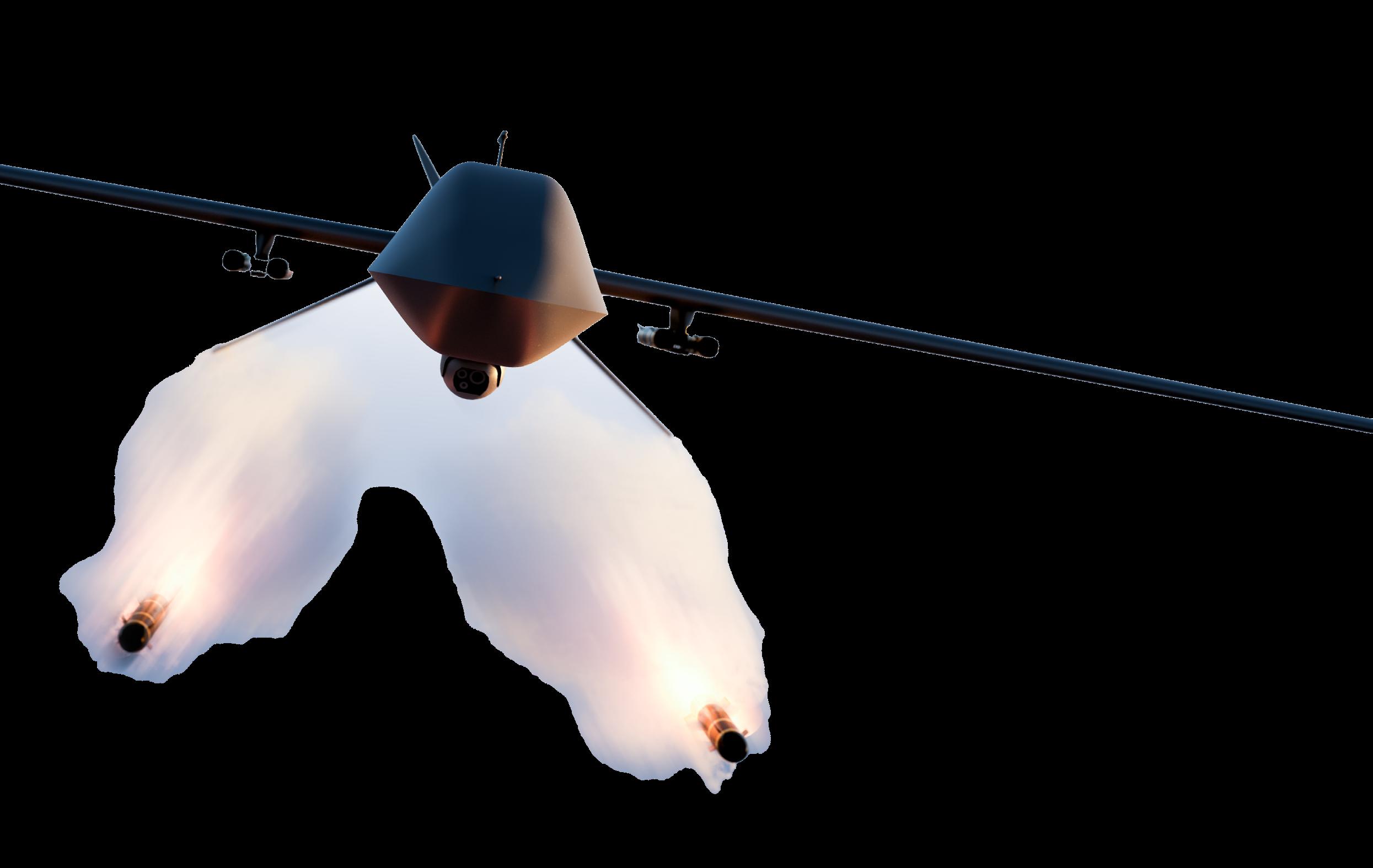
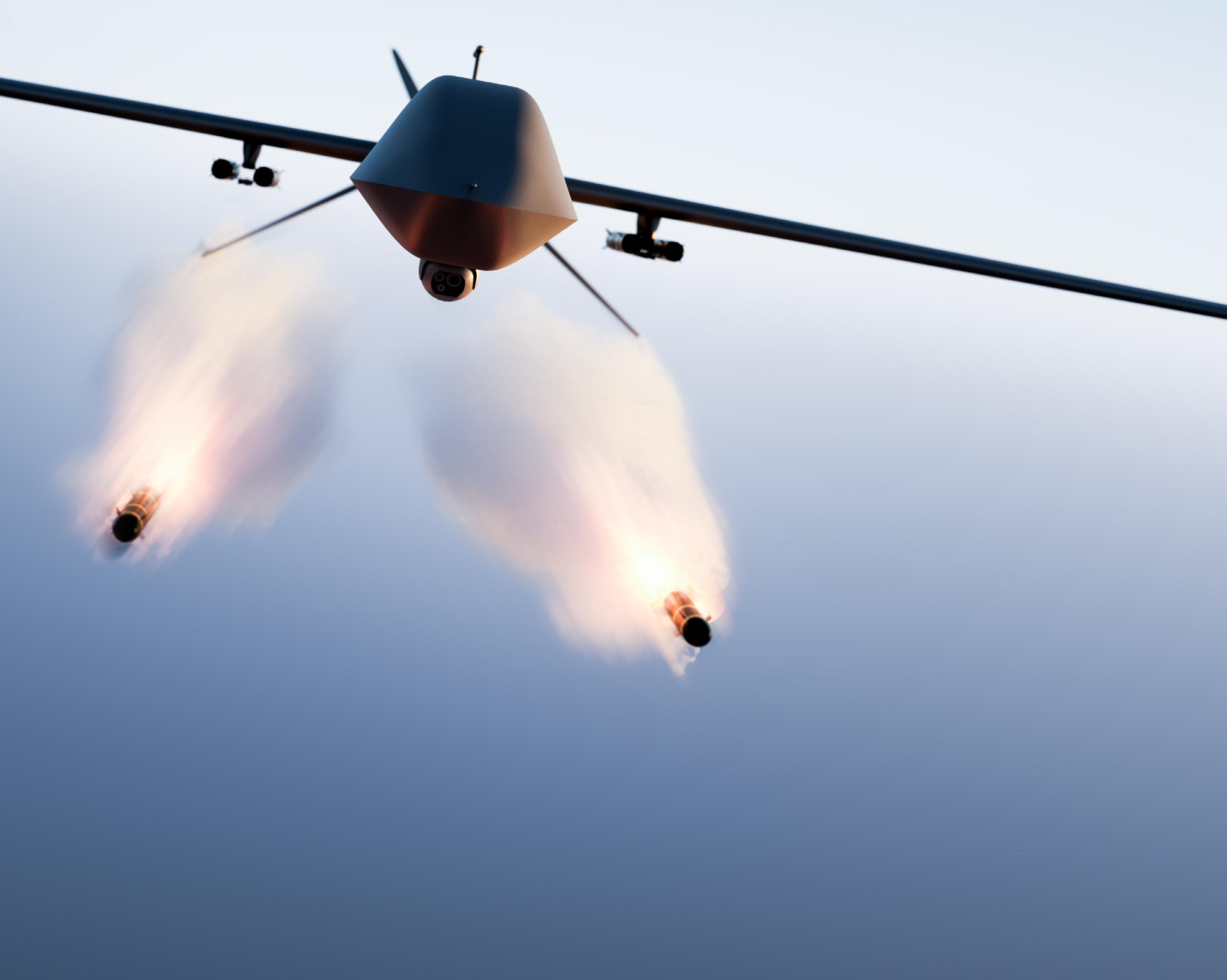
not one of coherent development. It was not until the First World War that formal doctrine emerged for the division and not until after the Second World War that it emerged for the corps, while the interwar period was something of a void in producing formation doctrine. By the end of the Second World War, however, these problems had been largely rectified. British Army doctrine since then has evolved with changing technologies and lessons from armed conflicts. The continuous development of corps and division doctrine remains vital if these formations are to retain a place in 21st century warfare.22
The second continuity is the importance of the corps and division to deliver firepower on the battlefield. If there is an enduring lesson from the evolution of the corps and division from the two world wars onwards it is their vital role in delivering concentrated firepower. The fires capabilities of corps and division were the key to success against peer adversaries in the first half of the 20th century. The requirement for formation dispersal from the Cold War onwards does not alter this key role. What has changed is that the corps and division deliver firepower over a wider area and with precision. Concentration is now about using the mobility
of fire to achieve scale of lethality when required at decisive points rather than physical proximity.
The third and final continuity concerns the British Army’s historical experience of multinational British-led corps and divisions. During the Napoleonic wars the British Army by design created a multinational corps and multinational divisions. The Cold War, II Corps during the Suez operation and the 1st Commonwealth Division in the Korea war provide other examples of British-led multinational formations. After the Cold War, Britain would deploy the British-led multinational Allied Rapid Reaction Corps in Southeast Europe in the 1990s and Afghanistan in the 2000s. Similarly, a British-led multinational division operated in stabilisation operations in Bosnia between 1995-2004.23 An important historical role of British multinational formations is to augment British mass. With the British Army experiencing a steady decline in numbers of troops in the post-Cold War period, multinational composition of a British-led corps and division may have become a necessary means to maintain credible formation warfighting capability.
Colonel Shaun W M Chandler Commander Headquarters Soldier Academy (North)
“The problem which faces the reformer of armies in peace might be likened to that of an architect called on to alter and modernize an oldfashioned house without increasing its size, with the whole family still living in it (often grumbling at the architect’s improvements since an extra bathroom can only be added at the expense of someone’s dressing-room) and under the strictest financial limitations.”
– Brigadier A.P. Wavell CMG, MC
Wavell visiting the contemporary British Army would see a busy building site with the architect’s plans carrying the Defence in a Competitive Age1 watermark visible through the Land Operating Concept 2 and the NATO Force Model 3 blueprints. Work is moving apace, but black clouds are rolling-in from the East and the roof is not yet on…
This article seeks to consider the challenges of the contemporary land domain and what that tells us about the structure and attendant formations that may best meet them. Specifically, what do these structural changes tell us about the UK’s approach towards the land domain in the early 21st century. Continuity, revisionism or change?
Considering
The canon of commentary and assessment of the future land
1Ministry of Defence, Defence in a Competitive Age (Crown Copyright, March 2021).
2Major General James Bowder, The Land Operating Concept, A New Way of Winning, The British Army Review 185, Autumn 2023.
3Brigadier David Bickers, Piecing Together A Picture of Our Future Role in NATO, The British Army Review 186, Spring 2024.
operating environment is vast. In general, it broadly agrees that it will be complex. Certainly, more so than a staff college table-top exercise would like. For ease of examination, we’ll consider three interlinked factors which influence complexity and remain relevant to the design of land formations: space, mass and tempo.
Space. The battlefield has expanded beyond the soldier’s survey to become a broadened zone of contest which now includes the space and cyber/electromagnetic domains. Regardless of which domain you fight in, but especially on land, there may well be as much activity that is unseen as is seen within your area of operations – activity you may not have control over. This is not necessarily a revolution, but it certainly has the feel of a fast-paced evolution characterised by adjacent domains becoming increasingly intermeshed across the levels of war.
Cookie-cutting the battlespace into the deep, close and rear remains relevant in the land domain. After all, the land is still very much about people and geography. However, dependent on the character of the fight, and the level of formation, it can be difficult to apply this framework. When arrayed in a classic defensive framework or punching into an enemy’s depth to secure a physical objective, shaping the deep, whilst winning the close, and protecting lines of communication to sustain through the rear, the geographical framework makes sense. However, securing an urban sprawl amidst a partiallycompliant population with an active enemy manoeuvring across domains, can have a psychedelic effect on the traditional geographical framework.
It is not just the geographical framework that is being stretched in all directions, but also the strategic to the tactical hierarchy of war. As the non-physical
The battlefield has expanded beyond the soldier’s survey to become a broadened zone of contest which now includes the space and cyber/ electromagnetic domains. Regardless of which domain you fight in, but especially on land, there may well be as much activity that is unseen as is seen within your area of operations – activity you may not have control over.


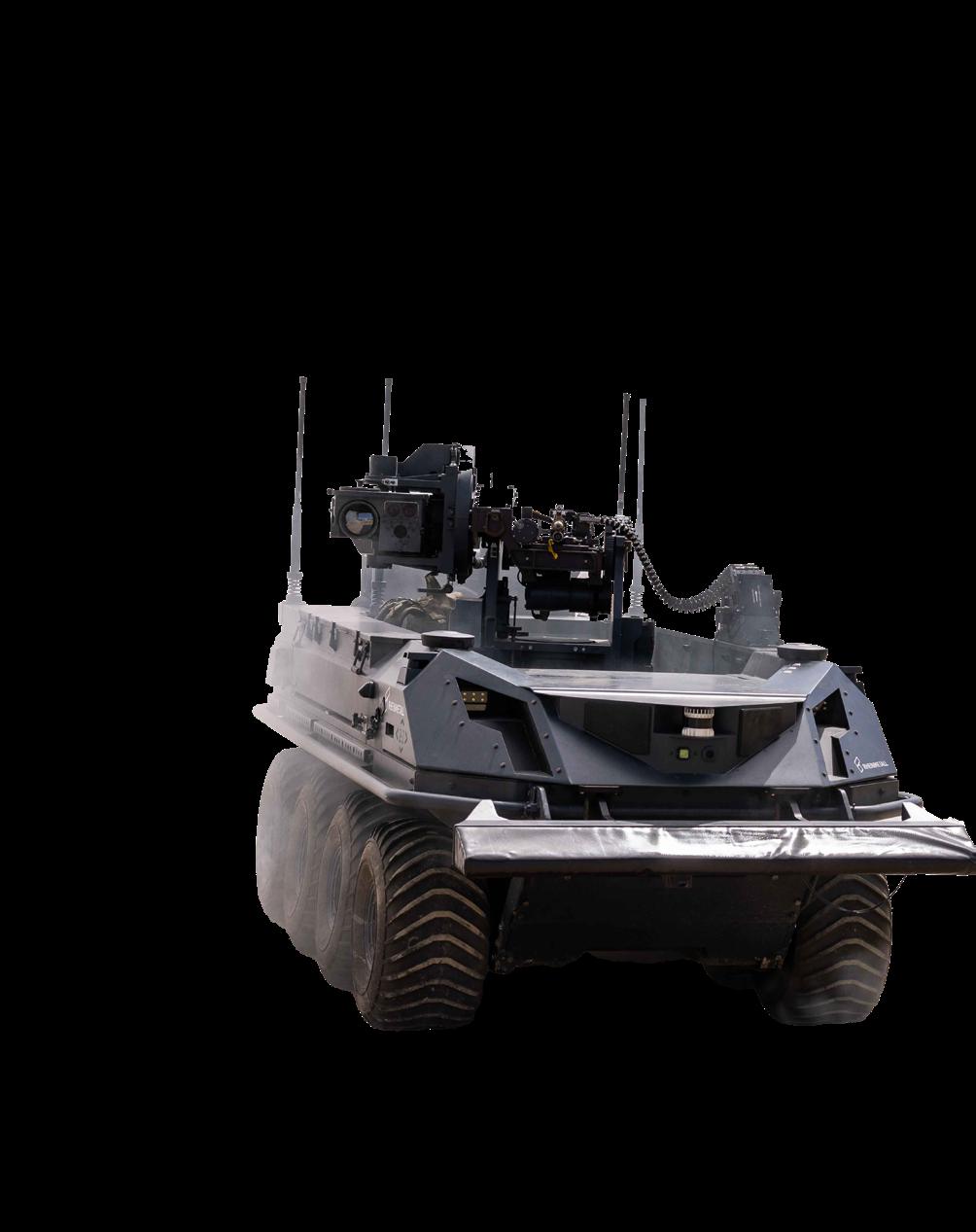
Remote and autonomous systems may assist in generating the necessary mass, but beware the siren call of automation... infanteers somewhere will be digging trenches long into the 21st century “”
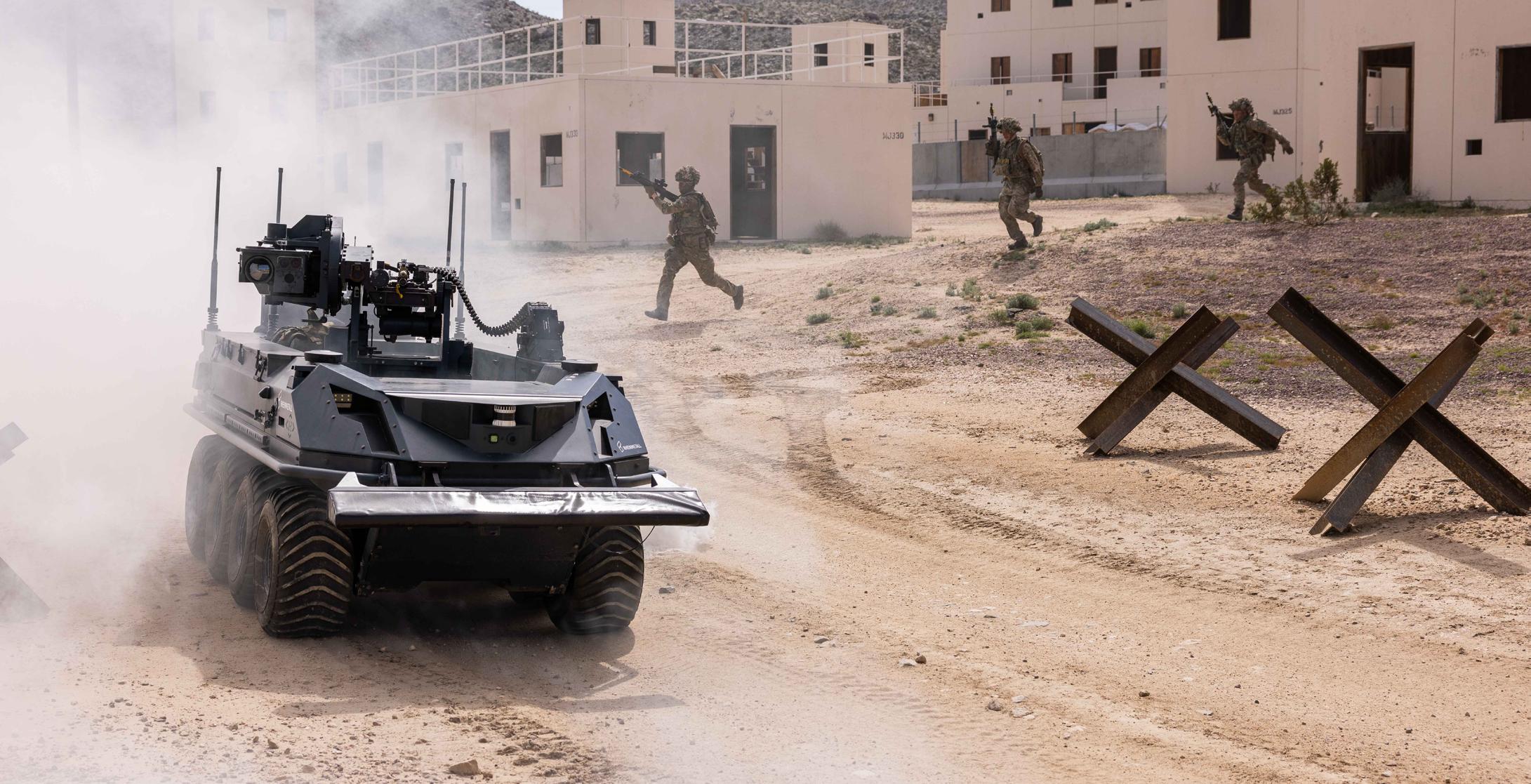
has increasingly merged with the physical, and the battlefield has slipped the ties of geography to become the battlespace, the contest is no longer easily bound within a theatre. This is nowhere more keenly felt than at the operational level where any contest within the land domain must contend with an extended battlespace forming a competitive arena that is simultaneously physical and non-physical.
Mass. Force elements are quickly blotted-up within complex terrain which makes itself felt by compromising the ability to manoeuvre through the frictions of complex geometry and/ or population density.4 It is for this reason that high intensity warfare is seen as a multinational endeavour; a key factor influencing the UK’s investment in the NATO Force Model. A burden shared.
Mass itself is an elastic concept. Is mass represented by tanks lined-up on the lawn or is mass the simultaneity of activity across time and space? Or is it a sliding scale that includes an admixture of both as one moves from domain to multidomain? Is it the case that those same arrayed ‘tanks’ can be equally dispersed to provide affect across time and space or be cohered to deliver force at a singularity? The ‘three-block’5 nature of the modern battlespace and its increasing lethality demands a degree of flexibility in task organisation and synchronisation that vastly complicates the job of warfighting.
To fight in complexity requires enormous amounts of training and cost. Western armies, including the UK’s, are struggling to maintain professional forces at the size necessary to deliver traditional mass. Inflow and outflow, or recruitment and discharge, simultaneously erode capability in terms of pure numbers, but also leak the hard-won expertise necessary to thrive in complexity. Configuring highly networked and lethal teams that can as easily disperse as consolidate promises simultaneously to assuage the mass dilemma whilst keeping pace with the land domain’s runaway congestion and lethality. Remote and autonomous systems, or human-machine teaming,6 may assist in generating the necessary mass, but beware the siren call of automation... infanteers somewhere in the battlespace will be digging trenches long into the 21st century.
Tempo. Tempo in UK doctrine has traditionally been used to consider activity relative to an adversary. However, it is perhaps more useful today to consider tempo as activity relative to time. Such activity is neatly surmised in the OODA [Observe, Orient, Decide and Act] loop7 which, whilst applicable across the levels of war, arguably increases from the complicated to the complex as one ascends the warfighting levels, reaching its apogee at the operational level. Tempo, at any level, increases in complexity as actors and activities multiply, whilst decisionmaking time dwindles. It is the integration of domains at the operational level which amplifies its relative complexity as the contact surface area increases exponentially as the domains expand. This is more Jomini than Clausewitz and, just as the former framed our initial approach to the operational level, a similar conceptual refresh is needed now.
The operational level seeks to cohere joint activity or, today, goes further to seek multi-domain integration. At this level, activity across domains is fused (synchronised and/ or converged) to achieve the desired effects. The activity may present in a single domain and be coordinated by the domain’s relevant tactical HQ, but the activity was planned and synchronised at the operational level. In such a model, activities regardless of domain or nature (physical or nonphysical) provide a power of combinations to achieve effect.
To talk of kinetic and non-kinetic effects is unhelpful and inhibits the manoeuvrist approach. Tempo, rather, is the rate of activities to achieve effects in targets relative to need. The activity can be multi-dimensional, the measurement behavioural and/or physical, and the need driven by a combination of factors ranging from being relative to the adversary through to the environment.
4Mike
5Charles Krulak, The Strategic Corporal: Leadership in the Three Block War, Marines Magazine, Air University, 1999.
6Payne, Kenneth. I, Warbot, London: Hurst and Company, 2022.
7Frans Osinga, Science, Strategy and War: The Strategic Theory of John Boyd, Abingdon: Routledge, 2007.

The British Army is now aligning and developing its structure to address the challenge of delivering and sustaining land power within the 21st century. Within this structure, the UK is defaulting back to the division as its primary unit of land currency. This contemporary form of a division retains the core idea, the ability to deliver land power through combined arms, but also to be able to absorb attrition without defeat to maintain agency on land. Temporally, able to fight, concurrent with planning the next round. All of this sounds relevant to the future, and it is.
The division exudes fighting power and confers an image of mass. An ability to disperse yet coordinate affect is clearly a welcome facility if vulnerabilities in other domains present, or the very character of the conflict deserves such an approach. Ideally, such a division would be able to task organise according to need to mitigate or exploit the conflict’s geometry, the enemy and/or one’s own force. Flexibility in task organisation is certainly a desired facility, but it requires a high degree of training and robust command and control. The former exemplified by an ability to re-task-organise at speed and the latter by an ambitious blend of mission command and advanced cross-domain communications. As the electromagnetic spectrum is likely to be disrupted through a combination of active contest and simple clutter, this is the key medium which dictates what form a division can take to deliver its functions.8
Whilst context and theorising have sought an operational level home for the division, it has generally been, in war, a tactical formation. The division, very much residing within the land domain, cannot easily plan and coordinate cross-domain activity concurrent with managing the land battle. Part of this is a tension in the narrowing of geography imposed by contested land tactical action alongside the extended battlespace enjoyed by adjacent domains. The 21st century division needs to be able to converge multi-domain activity within its area of operations, but it is unlikely to be able to truly deliver the operational level. Indeed, in the face of the
8In UK doctrine, cyber and the electromagnetic spectrum are conjoined in a single domain. This is arguably a mistake (one sidestepped by the US). Whilst force structures and a coordinating authority can be assigned to generate and apply cyber power, who can do the same with the whole electromagnetic spectrum? It is relevant and present in all domains and, therefore, something to be managed by those operating on land, on sea, in the air, in space, or across cyberspace. Its management is as fundamental to contemporary warfare as that of petrol, oil, and lubricants.

land domain’s increasing complexity, in many contexts the division would be overwhelmed unless situated within a corps (or even higher formation).
The contemporary land structure needs mass in all its forms. It must be able to consolidate land power to hold a relatively narrow frontage and prevent penetration and/or exploit into the enemy’s depth. Plus ça change from the First World War to Ukraine today. However, it must also be able to rapidly task organise to disperse and operate across wide swathes of geography to provide persistent engagement, survive and provide the opponent with multiple dilemmas. So, the answer may well be a division with three armoured brigades in one area of the battlespace whilst in another a division’s brigades are largely dismounted and dispersed as sub-units fighting three-block wars amidst complex terrain.
The ability to deliver this capability requires a digital backbone of enormous capability and resilience. Ultimately, the divisional headquarters must strive to maintain the situational awareness necessary to command in a complex environment and the units and sub-units operating within the formation must remain connected and supported. Such a digital division feeds on data as a combat supply but must also digest it. To do so at the tempo necessary to keep pace with the enemy and/or population within the domain requires data to be processed and converted into decisions at the pace of relevance.
This is a very different division to that of the 20th century. It remains combined arms and capable of drawing-upon joint capability, but its area of operations has expanded into the battlespace. To exploit this, it needs the sensors and computational power necessary to capture and process data at the rate demanded by the conflict it finds itself in. In terms of automation, robotics and data processing, the division is likely to leverage these to help address the need for mass within space to generate tempo at the tactical level; this is very much about accelerating the OODA-loop.
To address the challenges of contemporary conflict we can but work within our means. It is at the corps level that operational multi-domain integration can most realistically be achieved whilst the division can at best be network capable and able to leverage and de-conflict tactical land activity. The division, therefore, should strive to achieve ever-
The ‘man in the dark’ is now the ‘man in the light’, blinded by a white light of data that, rather than provide situational awareness to drive assured action, can paralyse if not funnelled, triaged and analysed at the appropriate level “”

greater integration within a corps construct. This, most practicably, means both 1 (UK) Div and 3 (UK) Div being formally aligned to the Allied Rapid Reaction Corps. Of course, the NATO interoperability this would generate does not preclude the divisions being assigned to another NATO high-readiness corps. It also maintains sovereign capability (including Combined Joint Expeditionary Force deployment) in both formations and nurtures the knowledge, skills and experience necessary to fight on land across the tactical and operational levels of war.
Generating the mass necessary to warfight in the contemporary environment is a multinational endeavour. So, NATO interoperability and efficiency is essential. 3 (UK) Div is the UK’s contribution towards NATO’s need for traditional hard power on land. Armoured, mobile and survivable, its brigades can pack a punch but also doggedly hold ground. Aspiring to manoeuvre within the battlespace is right, but expectations of columns striking 1,000km into the enemy’s depth are rightly tempered by NATO doctrine which assesses war as it is likely to be rather than we may wish it. For a division the battlespace against a peer-enemy is likely to quickly narrow into a battlefield cocooned within a wider multidimensional battlespace.
1 (UK) Div addresses the need to persistently operate below or at the threshold of conflict and can intervene at pace as a global response division to shape the battlespace for (warfighting) intervention. It is as important that 1 (UK) Div is as interoperable with 3 (UK) Div as both are within NATO. This division would likely be required to operate across the full geographical framework, securing and contesting within complex terrain. This is as important as the higher tempo manoeuvre battle which seeks to sidestep the quagmires of complex terrain.
6 (UK) Div was (re-)formed to deliver the Army’s advanced capabilities; configured to compete upstream through forward partnering and influence operations. Its return as a formation was short-lived, but its developed capabilities remain essential. It is now being re-fashioned to deliver the Land Special Operations Force.9 The Land Special Operations Force has a role to play through persistent engagement below, at and beyond the threshold of war and as such sits most comfortably within or alongside 1 (UK) Div.10 The finite intelligence and influence capabilities (as most recognisably held within 77 Brigade) are best leveraged at the operational level. As such,
these should be leveraged at corps level and practically aligned with the Allied Rapid Reaction Corps.
The biggest conceptual leap in the land domain is likely to be at the corps level. It is the corps that is best situated to manage multi-domain capability at the operational level concurrent with enabling its divisions to deliver tactical capability across the spectrum of land activity. The corps must be able to exercise full control of and converge operational multidomain activity within the land domain whilst nesting within (as necessary) a joint force command. It is the joint force command which forms the operational to strategic interface.
All these formations must be technologically enabled to handle the complexity of contemporary conflict and, to offset immobility, aid force protection and sustain digital capability, the corps and joint force command levels may well remain within their firm bases. The division, however, will find itself in war, commanding on the ground.
The war in Ukraine has come as a bucket of cold water waking the West to find that tactical land war remains similar to where we left it in the 20th century. We moved on, it didn’t. Seeking the El Dorado of land war on the cheap, characterised by thinly dispersed jam and bold punches into the enemy’s depth, is to attempt to sidestep the resource costs of being ready for war. If we must fight on land, tonight or tomorrow against our likely peer-competitors, we will find ourselves fighting in a high-density environment where complex terrain, comprised of clutter and population, drains mass. The fight will be across multiple domains both seen and unseen. Within this environment, land forces will simultaneously have to be dispersed and consolidated, requiring an array of capabilities, from light to heavy, conducting tasks as diverse as advise and assist to combined arms manoeuvre. The “man in the dark”11 is now the “man in the light”, blinded by a white light of data that, rather than provide situational awareness to drive assured action, can paralyse if not funnelled, triaged and analysed at the appropriate level.
Students passing through staff college over the period of campaigning have concentrated on the brigade, but they must now start to truly understand and master the higher formations and use them as a tool to grapple with complexity. Thus, armed with the Land Operating Concept and NATO Force Model blueprints and the skills necessary to exercise operational art in the 21st century land domain, there is a chance the British Army’s roof is on before the storm arrives.
Continuity, revisionism or change? It is a bit of all three; failure to align the British Army’s structure to the persistent and novel demands of the 21st century land domain through revised, interoperable, divisional and corps formations will quickly nullify any aspirations of manoeuvre and deliver only attrition.
9Colonel Hugo Lloyd, Sharpening a Specialism: UK’s New Special Ops Force Prepares for NATO Spotlight, The British Army Review 186, Spring 2024.
10But ready to provide its capability across NATO as per the assignment to lead the Special Operations Task Force in 2026.
11Captain Basil Liddell-Hart, The “Man-in-the-Dark” Theory of Infantry Tactics and the “Expanding Torrent” System of Attack. Royal United Services Institution. Journal, 66(461), 1–22.
Brigadier General Armel Dirou Deputy Commander 1st (UK) Division
Napoleon inherited his military from the French Revolution. The new era that Goethe had imagined since the Battle of Valmy recognised the start of national armies, and with them numerous troops to field, lead and manoeuvre. After his victories during the campaigns in Italy (1796-1800), notably with the battle of Marengo on 14 June 1800 and Egypt (179899), the divisional concept once theorised by Jacques, count de Guibert, in the early 1780s, which had proven highly effective during the French revolutionary wars, was no longer adequate. In addition, the rudimentary means of communication and the updates of advances in intelligence became more fragile due to the breadth of the contingents’ deployment zones. “There are many good Generals in Europe, but they see too many things; I see only one, and that is the masses. I seek to destroy them, of course the accessories will then fall by themselves.” To strike a sure blow, Napoleon methodically pursued the art of outnumbering this enemy mass on any given day.2 In 1804 he created the Army corps headed by a corps commander and a small staff and comprising of two or three infantry divisions with their own divisional artillery, a cavalry division, a corps artillery unit, an engineer group and logistics units.
From the Army corps’ first training ground near Boulogne on the Channel, where it looked at invading Britain in the summer of 1805 and to Austerlitz six months later, this invention effectively swept aside all of France’s enemies. Each corps had its own marching orders for reaching the Rhine, crossing the Black Forest and regrouping in the Swabian Jura; they would emerge grouped together at Ulm. These “rivers”, as the corps were nicknamed, fixed General Mack’s Austrian forces whilst Marshal Ney’s corps cut off the Austrian retreat and seized Elchingen – a compulsory crossing point on the Danube towards Vienna. The pursuit on either side of the Danube river demonstrated decentralised command at corps level. Later, at Austerlitz, Napoleon coordinated the actions of his corps: whilst Marshal Davout held the right wing at Tellnitz and Sokolnitz, attracting the main effort of Russian and Austrian troops as they were leaving Pratzen, Marshal Soult, responsible for the main effort, cut off the centre of the coalition. Finally, Marshal Murat with his cavalry corps led the exploitation, while Marshal Bernadotte and the Guard were kept in reserve. Meanwhile, Marshal Masséna’s corps in Italy attacked the Austrian occupying troops, preventing them from reaching the main theatre in Bohemia.3 This corps’ invention enabled great mobility, dispersal, distribution of command and the ability to assemble quickly and swoop down on an opponent at a theatre level. The Napoleonic era opened the national and industrial dimensions of war and
1This is an abridged version of an article that was authorised by the French General Staff. The full version will be published at a later stage.
2Maréchal Foch, Éloge de Napoléon, Berger-Levrault, Paris, 1921, p.9.
3Claude Franc, La campagne de 1805 et Austerlitz : la genèse de l’art opératif, in Theatrum Belli, 2023, pp. 2-3.
highlighted the necessity to think about command structure and harnessing tactics to strategy. The Soviet leaders did so during the Second World War, applying these command structures on different fronts, which were inspired by their most famous military thinkers: Svechin, Tukhachevsky and Triandafillov.
These structures of command were applied successfully and proved their relevance during the Second World War and Cold War. It was not until the collapse of the USSR and the preceding three decades of counterinsurgency and stabilisation operations that the role of this tactical organisation came into question. The question of relevance remained until the return of the great power competition and the war in Ukraine, which has seen the fielding of the largest armies since 1945. How can a tactical organisation inherited from the Napoleonic wartime era still make sense during the era of artificial intelligence and drones? The combat environment has profoundly changed because of the increased lethality of weapons (in terms of destructive power and range), the transparency of the battlefield, the increased mobility of units, data centric warfare and air power. Does this structure and organisation from the past, with corps, divisions and brigades, still make sense?
Corps, divisions and brigades in modern warfare
Conceptual and theoretical reflections are difficult to implement when realised in an operational environment. It is not enough to have just a tool; the organisation must ensure that it works and is used to its best effect. Considering the operative4 command level, it is clear that it is multi-layered from joint aspects to the specific domains of air, sea and land. Many opinions were considered to establish whether some layers were still necessary based on the current reality of warfare. Shortly after the Second World War, the US launched a study about the Modern Mobile Army, with the purpose of understanding the capability of the Army, “of conducting combat operations throughout the world in either a nuclear or non-nuclear environment and against a variety of enemy forces (…) the corps was eliminated under the Modern Mobile Army concept”.5 In the 1970s after the Vietnam War, the US Army decided to structure itself with 21 divisions, subordinated in different corps, which have remained their structure for tactical and logistical manoeuvre. Meanwhile in France, land forces were articulated around the 1st Army with two corps: one in Germany encompassing three divisions and one in France encompassing two divisions, gathering 50,000 and 40,000 soldiers respectively. Even though the strategic environment did not change in Europe in the early 1980s, the considerable
4I am using the adjective operative rather then the term operational, which is usually used in the English language. Etymologically, operational means to be ready for use; it is a state and expresses something quite static. Operative comes from the old French adjective opératif in late 15th century, and in turn from Medieval Latin operativus, meaning to produce the intended effect. This adjective indicates a notion of movement, a dynamic that corresponds to the understanding that the Soviet thinker Alexander Svechin developed in his book Strategy. The aim of operative art or operative command is not to be ready for use as the adjective operational suggests, but to order the means and maintain them in a tactical dynamic until the political aims of the war are achieved.
5Robert A. Doughty, The evolution of US Army tactical doctrine, 1946-76, in Leavenworth Papers, n1, August 1979, p.19-20.



How can a tactical organisation inherited from the Napoleonic wartime era still make sense during the era of artificial intelligence and drones?
reinforcement demonstrated by the Soviet Army led the French to reorganise with smaller divisions. In 1984, underneath the 1st Army, three corps were manned with smaller divisions, approximately 10,000 soldiers each, and an independent quick reaction force was structured like a corps. For the French Army, the corps was, and has always been, a fully capable manoeuvre echelon, because it centralises scarce capabilities lacking in the divisions to be used where and when it is tactically beneficial. The radical change of strategic environment with the collapse of the USSR in 1991, and the promises of the so-called “peace dividends”, led to both an irrational dream of eternal peace and drastic cuts in defence budgets in Europe. The professionalisation of the armed forces also contributed to the downsizing of the Army format. The disappearance of the army level, stabilisation operations and the emphasis on counterinsurgency over some four decades have led to a loss of sight of the requirements of confronting a similar adversary, if not in a total war, then at least in a full-spectrum war. Then, manoeuvring only focused on limited commitments and was not seen in its holistic dimension. It therefore became difficult for the Army commanders to justify the need of a corps level, as troops could easily be led from Paris by the Permanent Joint Headquarters [CPCO].6 Such a request was and has been perceived as an Army’s whim to preserve posts, underpinned by retrograde views on what modern combat must be. The Army has long been criticised for preparing for the last war rather the next. The mirage of a high-tech Army fed by data and info centric warfare, led many to believe that digitisation would enable the army to be commanded directly from the strategic level. However, it seems that some constants have been forgotten, despite rising Eastern threats serving as a reminder.
The complexity of modern warfare with the multiplication of assets, remote or not, the transparency of the battlefield due to the number of sensors and captors, cyber and electronic warfare, and the increased destructive power of weapons make the conduct of combat even more difficult than before. Such combat cannot be directed from Paris, or similar locations, because a long screwdriver is not a solution. If the strategic level
6
is dealing with tactics, it does not carry out its own missions. With the disappearance of the army echelon in 1993, the corps is now the sole operative command level in the land domain of warfare that has all the combat, intelligence, joint coordination (maritime, air, space) and logistics resources at its disposal. That command structure has therefore no equivalent for planning campaigns and coordinating actions in the deep, in the close and in the rear. Thanks to these capacities, the corps generates flows and is uniquely capable of acting as the transfer matrix between strategy and tactics. It directs operations as continuous, uninterrupted sequences until the political objective is reached, because its actions are sustained over time. In addition, the capacity to conduct operations in the deep requires “resources that will allow to surmount any enemy resistance, both at the outset and during operations”.7 Max Hastings offers us a perfect illustration of that with Konev’s seizure of Silesia in January 1945, harnessing tactics to strategy: “The broad principles of future operations were established. Zhukov would strike the main blow south of Warsaw, while Konev on his left sought to envelop the vast industrial areas of Silesia, rather than attack head-on against strong defences. Stalin was anxious to capture Silesia’s mines and factories intact, and emphasised his wishes to Konev (…) [The latter] had been ordered by Stalin to do his utmost to secure the area intact. The marshal launched his forces upon a grand envelopment, while simultaneously pressing the Germans frontally.”8 The Soviet commander thus succeeded in achieving the political goal given by his head of state and defeating his adversary thanks to an appropriate tactical course of action. This is typically the role of the corps today because the corps commander will be responsible for a front in which he must subordinate combat to the war by “combining operations for achieving the ultimate goal of the war”.9 For these reasons, some compare the corps with a carrier strike group, because of the breadth of its responsibilities and capabilities from strategic to tactical level and its operative role.
7
8Max Hastings, Armageddon, The Battle for Germany 1944–1945, Alfred A. Knopf, New York, 2004, p. 206 & 360.
9Aleksandr A. Svechin, Strategy, London, East View, 1993, p. 239.
However, if the corps seems to be still a relevant command level, can we wonder whether division and brigade organisations are? Indeed, in the past, the model of the French division has been different and evolved in accordance with the nuclear doctrine or the changes in the strategic environment. The Division 1959, named Division 59, was characterised by the reaffirmation of the brigade level, whereas Divisions 77 and 84 were downsized and had only regiments underneath. The Plan Army 2000 led then to suppress the divisional level and to replace the divisions by brigades. Initially, the field army kept one corps and four division headquarters, named Force’s HQs (EMF), dedicated to training and planning, and conceived to receive subordinate brigades in case of deployment. Two of them were disbanded in 2011. It is only recently, in 2015, that the two Force’s HQs have been generated again to be operational division headquarters, each one with three brigades underneath. So what formation is best suited to carry out tactical combat operations: divisions, brigades or both?
As mentioned earlier, the battlefield has considerably evolved and the lessons learned from Ukraine highlight the vulnerability of troop concentrations. It is therefore necessary to increase their survivability by being dispersed. Deployed wider and deeper, the divisions are the tactical level of command that produces the effects requested by the corps on the battlefield. Given the breadth of their own area of responsibility, divisions require relays to coordinate their actions. The brigades are this coordinating echelon that is permitted by the capabilities of the command information systems, the mobility of units and their extended combat capabilities. Nevertheless, this dispersal must not undermine the application of the three principles of war, inherited from Marshal Foch: economy of means, concentration of efforts and freedom of action.10 The second principle will be the most difficult to apply because of the dispersion. We then should consider that we must understand the concentration of efforts by the concentration of effects that our equipment should allow through a manoeuvre of trajectories.11 Thanks to the flows generated by the corps, divisions can produce effects on the field and, because of the dispersal, brigades are needed as coordinating echelons for tactical actions.
Given the number and multiplicity of units on the battlefield, the corps, division and brigade levels allow the management of complexity. The chain of command also allows agility, so the guns of a division can easily support a division to one of its flanks. Each command level allows this flexibility and so vertical command breaks horizontal organisation to mass effects. The importance of the corps lies in the fact that it
is the level of multi-domains actions aimed at shaping the battlespace, creating the conditions for engagement and degrading the land enemy’s ability to operate, whereas the division seeks to condition the enemy’s force ratio to allow the commitment of close combat brigades.
To the initial question, we can positively respond that Napoleon would recognise his invention 220 years on, even though he would be shocked by the transparency of the battlefield, the flows of information and amazed by the joint aspect of warfare. Even though we could make a comparison with a carrier strike group, a corps is more than a capability or an asset that owns all resources that its subordinate units do not control. It is the political-military tool for the coherence of war in the land domain and a vital condition for tactical effectiveness and national sovereignty. That gearing enables the convergence of the strategic and tactical goals in the land domain. The French Navy and Air Force are conceived and organised around nuclear deterrence and state missions supported by coast guards and air space protection. That ultima ratio, which is the nuclear deterrence, cannot play its role if it is not preceded and supported by reliable and credible conventional forces. The French Army is that latter part of defence and founds its credibility on operative and tactical structures – corps, divisions, brigades – that permit France to remain a key player in the defence domain. This backbone of defence remains dependant on corps, divisions and brigades that are properly structured, manned and equipped – because a war starts on land and finishes on land. As part of the collective defence, the corps enables France to exert its strategic solidarity towards its allies and partners.
Finally, it is not unusual that strategy cannot get the expected political results from tactics. Such malfunctioning usually leads to protracted conflicts. It will therefore be interesting to study, after the conflict, the functioning of operative commands of both opponents in the war in Ukraine.
10These principles of war are those doctrinally defined in the French Armed Forces whereas the British doctrine encompasses ten principles of war.
11Guy Hubin, Perspectives tactiques, Paris, ISC-Economica, 2009, 190 p.

Colonel (GS) Michael Lanzinger DEU Liaison Officer to Ministry of Defence and PJHQ
The end of the operation in Afghanistan and the Russian invasion of Ukraine have resulted in a drastic re-evaluation of how the German Army is structured. In 2011, the German Army adopted a structure, which was the result of the then political and military realities and designed in an entirely different security policy environment. Although an attack by Russia on Ukraine was not completely unthinkable, it was considered rather unlikely. It was the challenging International Security Assistance Force mission in Afghanistan that dominated military planning at that time. The probability of a direct territorial threat to Germany or its allies was therefore also considered to be unlikely. The HEER 2011 structure was consequently optimised to meet tight budgets and the ‘most likely’ international crises. At the same time, compulsory military service was suspended, as it was justified solely by the recruitment of personnel for defence in accordance with Article 5 and costs could be saved by cutting the corresponding training organisation.
In 2011, the Army’s structure was characterised by its obligations to NATO, in particular ensuring Germany’s contributions to global missions and mission-equivalent responsibilities within NATO, the EU and the United Nations. It was determined that two mechanised divisions – each with four combat brigades, a light division with special forces and an airborne brigade with evacuation operations capability – satisfied the military requirement to conduct international missions while fulfilling NATO commitments. However, the tight financial framework also led to painful concessions. Certain capabilities were significantly reduced and entire branches of the armed forces, such as army air defence, were disbanded completely. Cuts were also made in combat support and command and control, which were centralised and removed from army control. These concessions and removal of responsibilities resulted in further complicating planning and preparation processes, created a lack of cohesion in deployments and led to micromanagement at the highest levels. Particularly challenging was the abandonment of fully equipped units. Units with an operational mission abroad had to relinquish combat vehicles and equipment to other units so they might be almost fully equipped for combined arms combat training projects. The challenges lay primarily in the different requirements for foreign missions on the one hand and the training in combined arms combat on the other. Ultimately, this struggle led to a steady loss of capability in combined arms combat.
The annexation of Crimea by the Russian Federation in 2014 exposed this lack of capability against the new realities of an
1See General Mais’s linkedin post from 24 February 2022 at https://www.linkedin. com/posts/alfons-mais-46744b99_du-wachst-morgens-auf-und-stellst-fest-es-activity6902486582067044353-RZky/?originalSubdomain=de [accessed 05/06/2024].
aggressive Russian foreign policy. The convenient assumption of being able to prepare for an armed conflict with long warning times proved to be a fallacy. Under the heading of ‘cold start capability’, the focus of operational readiness was increasingly orientated towards threats from Russia.
As a result of NATO decisions in 2015, the Army developed the first contingent of the Very High Readiness Joint Task Force (VJTF) with an armoured infantry battalion to protect NATO’s eastern flank based on the NATO Readiness Action Plan. In 2019 and 2023, Germany was the lead nation with one combat brigade as the VJTF (Land). At the same time, the Army assumed responsibility as the framework nation for the enhanced Forward Presence Battlegroup in Lithuania in 2017. Since September 2022, Germany has also provided a brigade as part of the enhanced Vigilance Activities in Germany and is permanently represented in Lithuania with a Forward Command Element.
The Russian attack on Ukraine on 24 February 2022 led to a paradigm shift in German security and defence policy under the heading of ‘turning point’. In addition to supporting Ukraine and assisting international crises, the Army needed large, ready, cohesive units capable of sudden deployment. The aim of this transformation was ‘to make the army fit for war and to enable it to perform its tasks in national and alliance defence as well as in international crisis and conflict management in the best possible way’. As the German chief of the general staff publicly stated at the time, the German Army was “naked”,1 and delivery of material to the Ukraine only increased the already existing problems, not least because the German military-industrial complex had shrunk considerably
A German paratrooper from the Rapid Forces Division during Swift Response – part of NATO exercise Steadfast Defender 2024 Picture: NATO
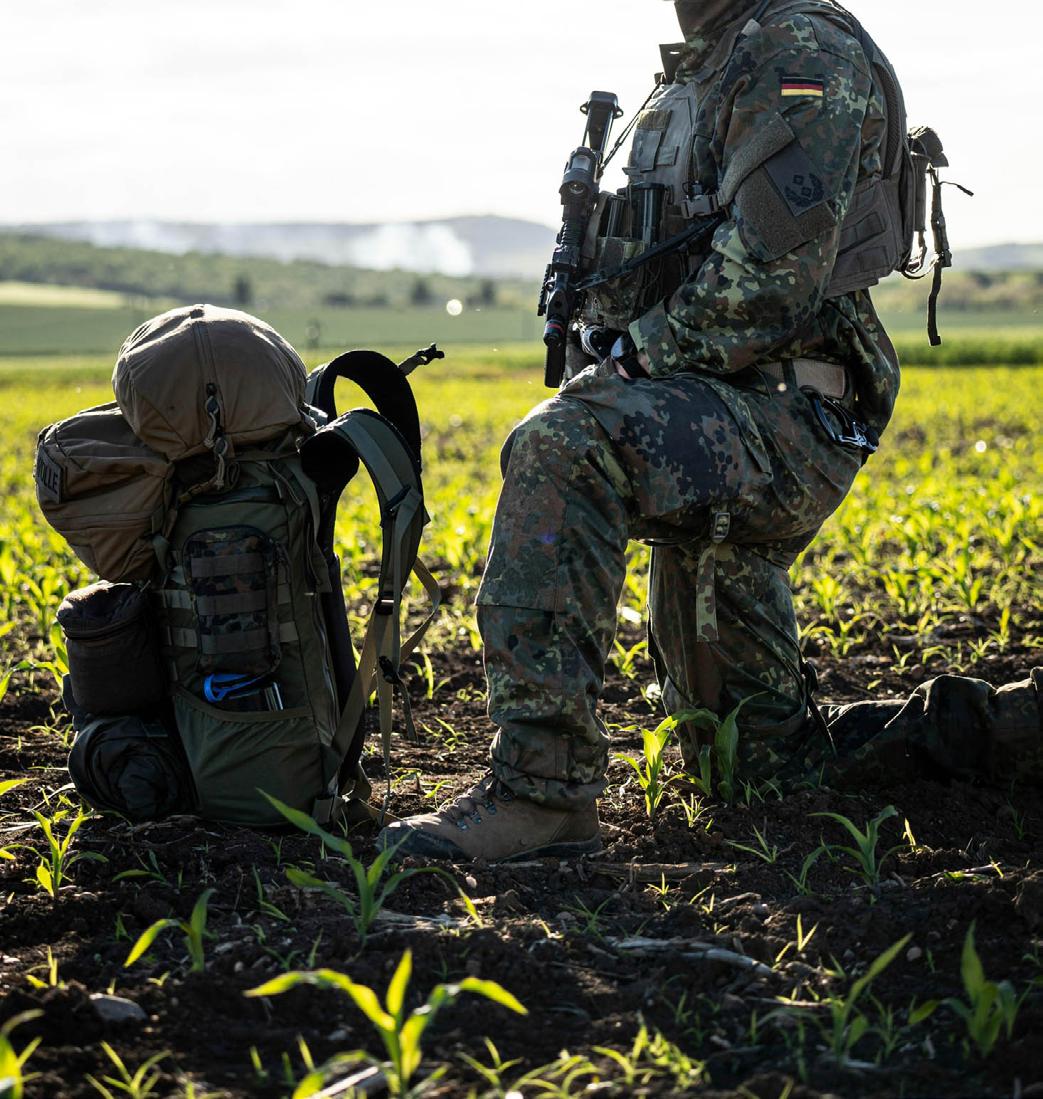

after the Cold War and is no longer able to produce and deliver large quantities of material in short periods of time. As part of the ‘Zeitenwende’ (turning of the tide) that German Chancellor Olaf Scholz had announced as a consequence of the Russian invasion of the Ukraine, parliament signed a €100 billion cheque for the Armed Forces to speed up equipping units and formations and to fill the gaps created by the delivery of material to Ukraine. However, the delivery of this material will take time. From a purely Army perspective, this sounds more impressive than it is, because the lion’s share will go towards the Air Force (€33.4 billion), while the direct investment in to the Army stands at €16.6 billion.2 One of the reasons for this impressive special fund was the realisation that, by design, units must achieve the requirements for high-intensity combat in national and alliance defence in a sustainable and command-capable manner, and also meet the required NATO readiness times. With this reorientation, the aspiration is that the German Army will become the backbone of conventional defence of Central Europe.
A mere return to Cold War structures was ruled out for myriad reasons, including the reduced manpower due to the end of conscription, advancements in weapon systems and the changed geo-political realities, which no longer see Germany as a front-line state in a potential major conventional war. In order to increase the range of response capabilities and to maintain the necessary balance between international crises and national/alliance defence, a new force construct of light, medium and heavy forces will be introduced.
Under the command of the Rapid Forces Division [DSK], the light forces will compose the Special Forces of the Special Forces Command [KSK] and two infantry brigades of Luftlandebrigade 1 and Gebirgsjägerbrigade 23 with their inherent combat and operational support units. They are airmobile and can be deployed quickly, which makes them the forces of the ‘first hour’. The successful evacuation operations in Libya, Afghanistan, Sudan and, most recently, the deployment for a sudden evacuation operation in Lebanon are examples of their range of capabilities.
The medium forces concept is a novelty in the German Army3 and is intended to close the gap between the rapidly deployable light forces and the heavy forces, which cannot be deployed independently. The medium forces are equipped in such a way that they are highly mobile with wheeled vehicles for road transport and capable of high-intensity combat. This means that certain operational areas can be reached quickly and independently to reinforce present or light forces. The medium forces brigades will require a completely wheeled fleet for infantry fighting vehicles, howitzers, mortar systems, armoured transport, engineer capabilities and all troop types based on the Boxer platform. The medium forces will be composed of the newly reorganised Panzerbrigade 21 and Panzergrenadierbrigade 41, as well as the Franco-German Brigade. Together with Panzerlehrbrigade 9 as a heavy brigade, these units will be part of the target structure within the 1st Armoured Division.
The objective is to incorporate Panzerbrigade 21 as the first medium force brigade into the NATO Deployable Force Pool from 2026 with an initial operational capability missing some weapon systems and capability carriers intended for the medium forces. This means that an infantry battalion and the associated support forces will be set up in an interim structure, with the expectation of a complete medium force brigade being available to NATO in 2027. The target structure for a complete full operational capability medium forces should be achieved by 2030+. Mixed wheeled and tracked systems will be unavoidable in the first years.
The heavy forces are classically defined by tracked infantry fighting vehicles and main battle tanks which normally have to be transported by rail or ship. The heavy forces include Panzerbrigade 12, Panzergrenadierbrigade 37 and Panzerlehrbrigade 9, as well as the new ninth brigade of the Army, Panzerbrigade 42, which will be permanently deployed in Lithuania from 2026 with full operational capability due in 2027.
Establishing the operational readiness of the 10th Armoured Division including divisional troops and two mechanised brigades (Panzerbrigade 12 and Panzergrenadierbrigade 37) as “Division 2025” in the Tier 2 category is a top priority for the Army. Tier 2 is defined as forces within the NATO Force Model that can be deployed within 11 to 30 days. If required, an additional heavy brigade, the Panzerlehrbrigade 9 from the 1st Armoured Division, will be available for the 2025 Division. Panzerlehrbrigade 9 will remain under the 1st Armoured Division and will only be assigned to the 10th Armoured Division for training and exercises as part of national and alliance defence. The Panzerlehrbrigade 9 will alternatively continue to perform alternate international crisis management tasks.
In addition to Division 2025, the Army will provide a Helicopter Task Force as a corps force for the Multinational Corps North East with initial operational capability in a reduced brigade size by 1 January 2025. It will grow with the new Light Combat Helicopter into an Aviation Brigade through structural adjustment by 2028.
The 10th Armoured Division will consist of the Panzerbrigade 12, the Panzergrenadierbrigade 37, the Dutch 13th Light Brigade and the Franco-German Brigade. Panzerbrigade 42 in Lithuania will be a future addition. It has not yet been decided which brigades will remain with the Franco-German Brigade, but it will not be part of Division 2025. The future tasks and the new role of the Franco-German Brigade due in 2024 will influence the brigade selection.
2https://de.statista.com/statistik/daten/studie/1399584/umfrage/aufteilung-dessondervermoegens-der-bundeswehr [accessed 11/06/2024].
3For the concept of medium forces, see bundeswehr.de/de/organisation/heer/aktuelles/neuekategorie-im-kampf-die-mittleren-kraefte-5594418 [accessed 08/06/2024].
For special consideration is the new Panzerbrigade 45, permanently deployed in Lithuania as a Tier 1 brigade. It is considered a flagship project of the security policy turnaround proclaimed by Federal Chancellor Olaf Scholz and is a special signal of solidarity with the alliance. The brigade is expected to be fully operational by the end of 2027. It is designed as a heavy combat brigade and will be led by Division 2025 in the future. It comprises three combat units: the Panzergrenadierbataillon 122, the Panzerbataillon 203 and the multinational enhanced Forward Presence Battlegroup Lithuania. The enhanced Forward Presence Battlegroup will be integrated into the Panzerbrigade 42 as the third combat
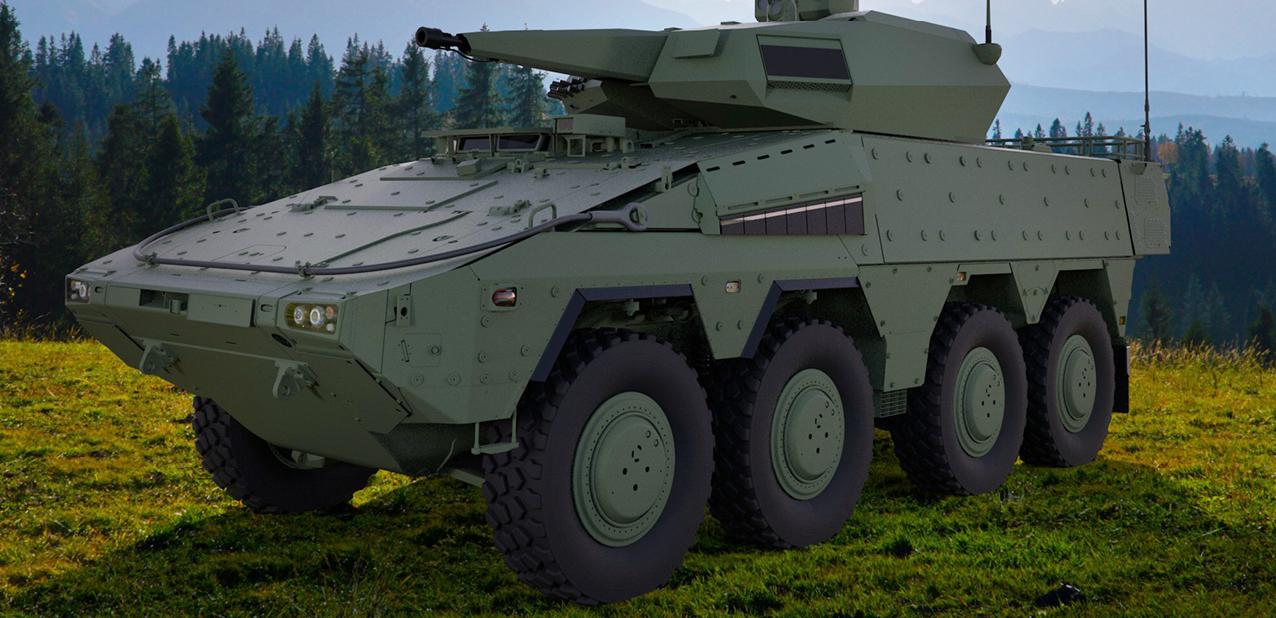
unit. An advance party has already deployed and the official commissioning is planned for April 2025. Panzerbrigade 42 will deploy from July 2026 to June 2027, dependent upon available infrastructure and logistical supplies, followed by training and exercise activities. Until the Panzerbrigade 42 is ready for deployment, the enhanced Forward Presence Battlegroup will defend Lithuania whilst the enhanced Vigilance Activities Brigade – currently Panzerbrigade 21 –stands ready in Germany.
The key decisions have been made and the target structure has been adapted to the current security policy challenges. The first subordination changes have already taken place. Gebirgsjägerbrigade 23 has moved from the 10th Armoured Division to the Rapid Forces Division, the heavy combat battalions are being concentrated in Panzerlehrbrigade 9, Panzerbrigade 12 and Panzergrenadierbrigade 37, and the amalgamation of the infantry battalions of the 1st Armoured Division into Panzerbrigade 21 marks the start of the new force category as a medium forces brigade.
Many decisions from the 2011 structure have been reversed. For example, it was recently announced that the Army is reorganising the Army Air Defense Force. A new air defence system for close and immediate area protection is being developed in cooperation between the Air Force and the Army. The Army’s air defence will be equipped with the Skyranger 30 as its initial capability. The IRIS-T will be procured as the Air Force’s main weapon system. This will combine the Army’s mobile air defence (short range) with the Air Force’s longer-range air defence (medium range). The reorganisation is geared towards achieving this joint development.
The enabling forces will be significantly strengthened. Divisions will once again have reconnaissance, artillery, engineer, supply and telecommunications battalions as divisional troops. This enables the division commander to organise his division as an operationally capable large formation. Of particular interest might be the renaissance of indirect fire and fire support. In October 2023, the Army created a new artillery battalion, so that the Army now comprises five battalions (equivalent to British regiments).
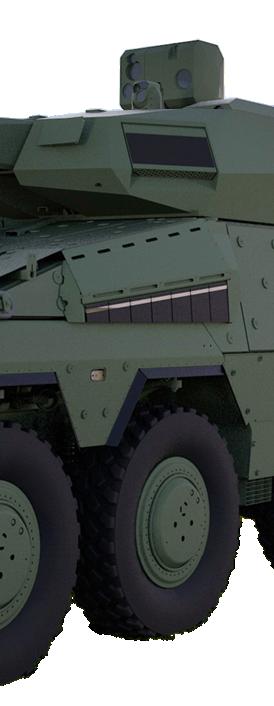
The aspiration is that, by 2035, the artillery will consist of 13 battalions. A faster increase to reach this number earlier is desired, but will be hampered by the aforementioned issues with regards to defence industry.4 Thus, procurement projects and personnel recruitment remain a challenge. The increase in personnel is to be achieved, among other things, by strengthening the influence of commanders on applicants and the possibility of filling positions above 100 per cent.
In the area of procurement, the decision on the special fund totalling €100 billion as start-up funding is intended to create the necessary scope to achieve tangible progress towards fully equipping the Army’s units and formations in the coming years. The aim is not only to close capability gaps from the past, but also to enhance and shape the Army’s future viability. In addition to the necessary improvement of command and control capabilities and digitalisation, the Army is adapting to a changed operational environment with the establishment of the new Intermediate Forces. In particular, the establishment of the medium forces category also offers great opportunities for modernisation through the procurement of new large-scale equipment. The medium forces will be a key innovation driver of the future.
In summary, the Army is transitioning to a new structure that meets current security threats. An ambitious process has been initiated with great effort, the cornerstones being Division 2025 and the new Panzerbrigade 42 for service in Lithuania 2027, and operational readiness of the mediumsized armed forces by 2030. This development is, in parts, a return to ‘classical’ German thinking, stressing the importance of the Army and the land domain for a country that finds itself in the centre of Europe. The development explained above shows a strengthening of the land component. While the new Army structure is a reaction to the new threats, it is also characterised by a realisation that the trialled and tested divisional structure has stood the test of time. The German Army of the future will therefore transform, but it will not be characterised by a fundamentally new organisational design.
4hartpunkt.de/keine-zeitenwende-bei-der-aufstellung-neuer-artillerieverbaende [accessed 11/06/2024].
Professor Jonathan Trevor1 Associate Dean and Professor of Management Practice Saïd Business School, University of Oxford
I am now in my ninth year of instructing on the Army Generalship Programme, which is held annually at Royal Military Academy Sandhurst and sponsored by the Chief of the General Staff. It is an intensive two-week programme for new one- and two-star generals, bringing together a variety of internal and external speakers to – hopefully – guide, provoke and inspire. My Army Generalship Programme journey started in 2016 with a 45-minute talk (pleasingly, now a half day) in which I asked the simple question: Is the Army fit for purpose? Okay, so, it is not such a simple question. But what is straightforward and beyond doubt is that ‘fitness’ should be the ambition of all leaders of organisations everywhere.
Unfit organisations are incapable of performing their purpose. When their purpose, their raison d’etre, is so vital as the British Army’s, fitness is perhaps the most essential concern of all, organisationally and nationally. But what does fitness mean in practice? And what does it look like for the Army specifically? How is it achieved and maintained? What is the role of leadership in the process? My academic work at Oxford and its application to organisations of every variety in every sector, including the Army, have sought to shed light on these questions. These issues are a core aspect of strategic leadership. In the context of the Army (and other Services), they are directly relevant to force development and future-proofing to ensure that the Army can continue to perform its vital purpose, taking advantage of all opportunities (such as alliances, new technologies and innovation) and countering all threats (such as adversaries, but also including the external economic, social and legal factors that all organisations face).
On the Army Generalship Programme, when considering force development, one consistent theme that emerges in discussions is the shape of the Army – its structure. How should we structure the British Army to be fit for purpose now and in the future?
When thinking about organisational structure, the first thing that often springs to mind is an organisational chart – engineering schematics illustrating boxes connected by

pieces of an organisation, often groups of people or roles, are related to each other. Another way to think about structure is that it is an essential element of how individuals and groups (think teams, departments, divisions, etc.) formally and informally cooperate to create value greater than could ever be achieved alone. Cooperation is – should be – the fundamental organising principle of any structure, whether through vertical coordination of effort or horizontal collaboration.
Militaries were one of the few examples of organising work at scale before the Industrial Revolution ushered in large commercial businesses and government departments. The legacy of military language is still pervasive today. The terms ‘officer’, as in chief operating officer, and ‘rank’, as in rank and file to refer to workers, are just two examples. A ‘division’ is another. The term ‘division’ arose centuries ago from mobilising disparate individuals to form a coherent military fighting force. A division was simply an ad hoc grouping of people separated, or ‘divided’, from others by their task and to be formed and disbanded as a group as required. Over time, divisions became established and evolved to become brigades, regiments, battalions, squads and so on, each reflecting an identity centred on its specialised role, function and ways of working as part of, eventually, a professional army – the British Army.
In many cases, taking inspiration from or simply stealing military principles of organising work at scale, late 19th century and early to mid-20th-century commercial organisations divided their labour to encourage task specialisation. This, in turn, created efficiencies that enabled firms to grow fast and large by offering their products more affordably to customers and creating mass markets in the process. This dominant form of work organisation is often called the U-form organisational structure.
The ‘U’ in U-form stands for uniform – in name and nature. The essential attributes were top-down management control, singular product focus (i.e. specialising in one thing alone), impersonal treatment of customers and staff, hierarchical organisational structure, formal procedures and rules, and precise planning formulated by the ‘thinkers’ (for which read managers, or officers) to be implemented by the ‘doers’ (for which read workers, or rank and file). Maximising economies of scale through the efficient execution of superior strategy was the primary definition of success.

Militaries were one of the few examples of organising work at scale before the Industrial Revolution ushered in large commercial businesses and government departments. The legacy of military language is still pervasive today. The terms ‘officer’, as in chief operating officer, and ‘rank’, as in rank and file to refer to workers, are just two examples.
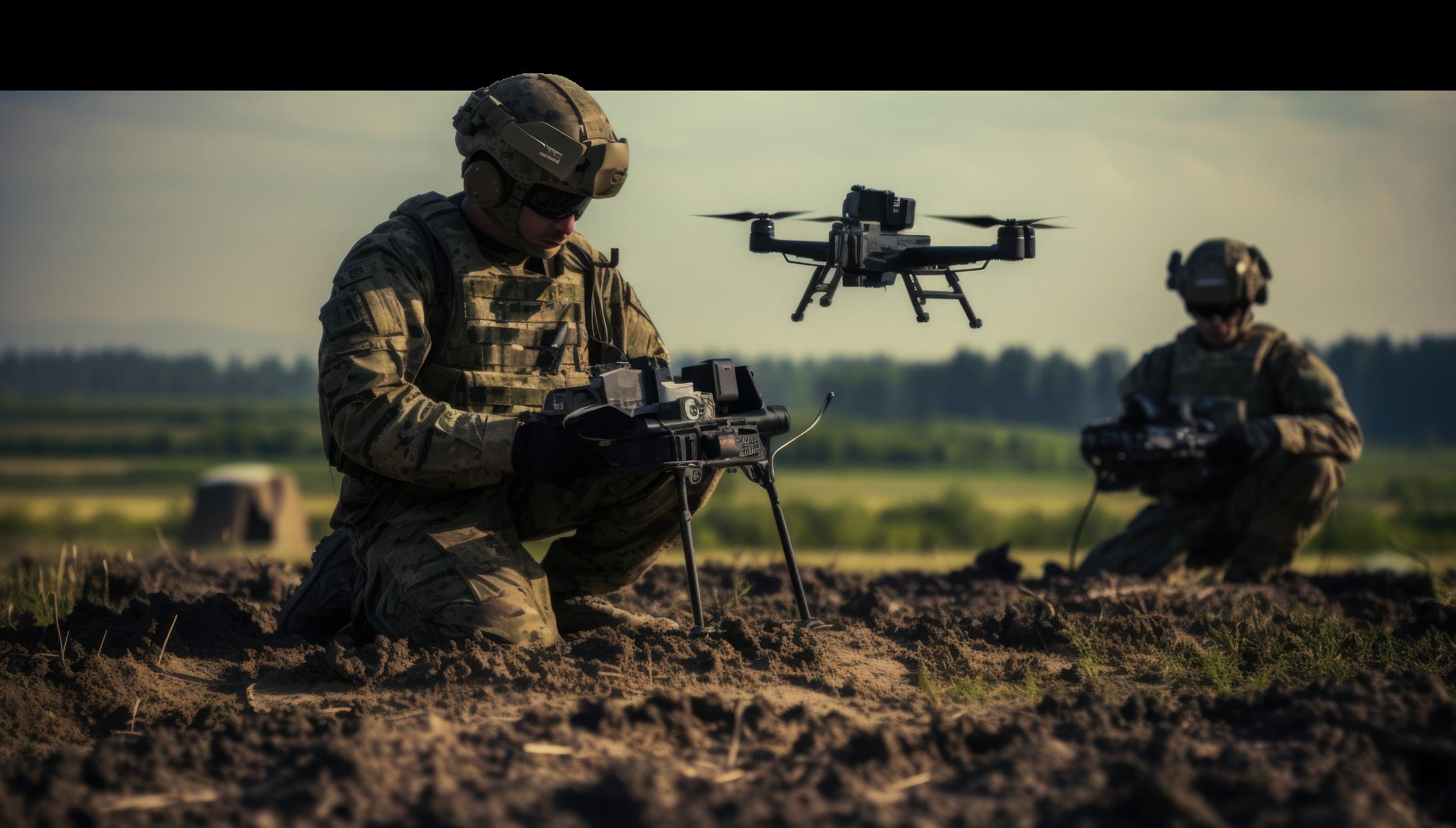
Technological automation is nothing new but integrating human and machine capabilities for all tasks for enhanced performance will become the dominant concern for how work is organised in the near future
The next iteration in organisational structure extended a singular product (or business) focus to multiple products and multiple businesses, each representing a different division of the same firm, typically. Enter the M-form organisation – ‘M’ for multi-divisional. In the quest for growth, managers looked to exploit commercial opportunities in adjacent industries and markets, capitalising upon their superior management skills to steal a march on parochial non-traditional competitors. The middle of the 20th century onwards saw the blossoming of corporations structured as multi-divisional conglomerates. Some of these continue today. But many of the most famous conglomerates – including the most famous of all, General Electric – have gone under or split apart.
General Electric used to be the most valuable and admired company in the world. A titan of American (and by extension, international) business, the corporation at one point manufactured everything from aircraft engines to light bulbs; it ran hospitals and financial services (the ill-fated GE Capital). Its chief executive officer, Jack Welch, was lionised and revered. The principle was that General Electric’s superior management competencies (often referred to as the GE Way, and the subject of best-selling books and considerable emulation by aspiring others) meant it could succeed at virtually anything. But today, General Electric is worth a mere fraction of what it once was and was recently split into three. General Electric, as it was, no longer exists. Instead, it has been largely replaced at the top of the corporate scoreboard by technology sector newcomers, such as Amazon and Google, which brings us to our final phase and the most recent iteration of dominant organisational structures – the network
As shared in a previous Ares & Athena, 2 management scholars distinguish two broad epochs in work organisation – the Industrial Age (described above) and the Information Age. The latter corresponds to the late 1970s onwards but gathered steam in the new millennium. The standard presumption is one of simple succession between the two. Information-age firms would inevitably succeed their industrial forebearers at the apex of economic value creation. This has occurred to a large degree. The world’s most valuable companies at the
time of writing are all technology companies (think Microsoft, Apple, Amazon, etc.). Industrial giants like General Electric have been eclipsed.
The information age ushers in a new form of organising, too. It is often referred to as a post-bureaucratic organisation in scholarly circles and as a network-based organisation or organisational ecosystem in the popular press. In form, network-based organisations are the antithesis of the industrial age hierarchy. They are informal (not formal), values-based (not rules-based), flexible (not rigid), networks (not hierarchies), personal (not impersonal), organic (not mechanistic), rely upon external resources primarily (not internal) and are horizontally (not vertically) integrated. The idea is to maximise innovation outcomes rather than efficiencies.
However, it would be wrong to think that only organisations structured along post-bureaucratic lines have a future. The industrial hierarchy, the multi-divisional and the network represent different approaches to work organisation and organisational structure. Each represents a distinct form to achieve a particular function. Each possesses advantages and disadvantages. What is true is that each iteration of how organisations are structured – whether U-form, M-form, postbureaucratic or everything in between – has been enabled by technological advances, with profound economic, social and political implications.
Technology is forcing change again by challenging the assumption that roles occupied by people (bankers, doctors or soldiers, for example) are the primary means through which an organisation’s work is performed. Technological automation is nothing new, of course, but integrating human and machine capabilities for all tasks for enhanced performance will become the dominant concern for how work is organised in the near future.
Concerning warfighting, the US military already distinguishes
2For reference, please see the article starting on page 6 of the June 2022 edition of Ares & Athena (20), entitled ‘Why Purpose Matters’.
“”

between ‘self-directed’ and ‘self-deciding’ systems in its Unmanned System Integrated Roadmap. Semi-autonomous selfdirected systems perform tasks independently of human control according to a planned programme. However, self-deciding systems operate with full autonomy, independent of a ‘human in the loop’, the machine deciding for itself the best course of action in ‘unforeseen situations’ according to inputs from its sensors and its ever-advancing cognitive capabilities.3 Organisational leaders should make careful and intentional choices about how their organisation is structured, which resources they should invest in, and how to align the moving parts of their enterprise to be fit for purpose. However, many organisations are manifestly not fit for purpose. Why, and what can we do about it?
A common reason organisational structure can become misaligned with strategic requirements is that it is often selfperpetuating. Management writer Peter Drucker famously said (or at least it is most commonly attributed to him) “culture eats strategy for breakfast”. He could also have been writing about structure. A common interpretation of Drucker’s statement is that the values, beliefs and behaviours that represent an organisation’s culture frame the strategy choices of its corporate executives, whether they consciously appreciate it or not. And the stronger an organisation’s culture – the more committed individuals and groups are to it – the more influential it is over how they perceive their world and their choices.
Strategising is a reflexive activity. Separating agency from structure and choices from prevailing norms is hard despite our best intentions. Organisational structure, like culture, serves to ‘structure’ how we view the organisations we lead and the choices we make, even to the extent that attempts
How organisations are structured and why they are structured the way they are is often not the result of reason or rational planning. This is especially a perennial risk in large, longestablished, inwardly focused, monopolistic, complex organisations with elaborate symbols, pervasive social rituals, and intangible and taken-for-granted cultural norms. Sound familiar?
to transform an organisation may serve to reproduce and reinforce its existing values and practices unwittingly.4 Ideally, it should be the other way around. Culture and structure (as the form of an organisation) should follow strategy (as the function of the organisation). The form should follow function, and culture and structure should be designed explicitly to support strategy implementation. The point is that how organisations are structured and why they are structured the way they are is often not the result of reason or rational planning. This is especially a perennial risk in large, long-established, inwardly focused, monopolistic, complex organisations with elaborate symbols, pervasive social rituals, and intangible and taken-for-granted cultural norms. Sound familiar?
In such cases, including many storied private sector firms, the choice of organisational structure might be classified as non-strategic (and non-rational, technically) because it isn’t a choice at all. It merely reproduces the status quo despite being billed as something new. Or, an organisation’s structure can be emergent (not planned), accidental/ unintended (instead of purposeful), unstructured (not systematic), informal (as opposed to explicit) and inconsistent (as opposed to uniform). These are not bad qualities per se. Indeed, all these qualities are inevitable to some degree, especially in large, complex organisations operating under high uncertainty. However, they are not strategic in the strict sense of the word and its meaning, i.e. deliberate, farsighted, evidenced, systematic, etc.
Emergent organisational properties can introduce randomness into organisational systems, meaning that strategies go unimplemented or are implemented poorly, or
4The antidote to ‘structuration’, to coin the phrase popularised by the sociologist Anthony Giddens, is to bring in an external perspective to challenge group norms (which can become groupthink in the extreme) and the prevailing status quo. Indeed, bringing an external perspective to proceedings is part and parcel of the Centre for Historical Analysis and Conflict Research mission.
unintended consequences occur despite the best leadership intentions. The goal of all leadership – especially systems leadership – should be to create and maintain organisations that are fit for their purpose. This is a strategic concern in which organisational structure is just one (albeit an important one) feature of organisational design. It is a critical means to achieving the organisation’s ends. How should we approach it?
Adopting a capability-led perspective is a robust way to align organisational structure strategically. As noted earlier, there are many different forms of organisational structure, not just U-Form or M-Form (to name just two). Which is the correct one? It depends upon requirements. Such an answer assumes a contingency approach to organisational design. There is no one-size-fits-all solution to every requirement. There is no best practice; the only choice is to select a form of organisational structure from many different options that best fits the requirements. So, what are the requirements, and what are the associated structural options?
My research has attempted to shed light on this question as part of a broader concern with aligning businesses (including governments and public sector organisations) to be fit for purpose and high-performing.5 I identify four principal requirements through which leaders can meaningfully choose between different strategic approaches, including their approach to structuring their organisation. As illustrated in Figure 1, we can use a simple two-dimensional framework to make sense of a capability-led approach in the context of market requirements.6
In the first dimension, the x-axis, leaders must choose between organisational stability or agility. Stability enables standardisation, repetition, reproducibility and consistency of operation. These organisational attributes, in turn, enable predictability and efficiency as outcomes. In a stable market environment, stability, as an organisational capability, enables executives to confidently match market demand with predictable volume (i.e. supply), quality and cost. Such matching strategies were the hallmark of yesteryear’s successful company and corporate executive career and remain so today for many businesses.
But, of course, the external environment today is much more volatile, uncertain, complex and ambiguous (i.e. the popular VUCA thesis) than it was in the middle of the previous century. Agility must, therefore, also be considered a core organisational requirement for many businesses, government agencies and non-profit enterprises. In extreme cases, agility enables organisations to customise their offerings to market and even personalise their products and services to individual customers’ preferences. Agility permits teams to be agile around the needs of their customers and be creative and flexible in how they respond to demands.
In the second dimension of the framework, the y-axis, leaders must choose between autonomy and connectivity. Autonomous organisations are self-sufficient and rely upon their own resources and capabilities to offer competitive products and services to the marketplace. Autonomy is associated with simplicity, control, speed and strategic focus. There are few(er) distractions or tricky external relationships to navigate; autonomy permits leadership teams to pursue their own internal logic and be masters of their own destiny, as much as is possible in regulated environments. However, autonomous organisations are bounded by their own resources. Moreover, autonomy is often a feature inside and out – even different internal teams and departments are often separated
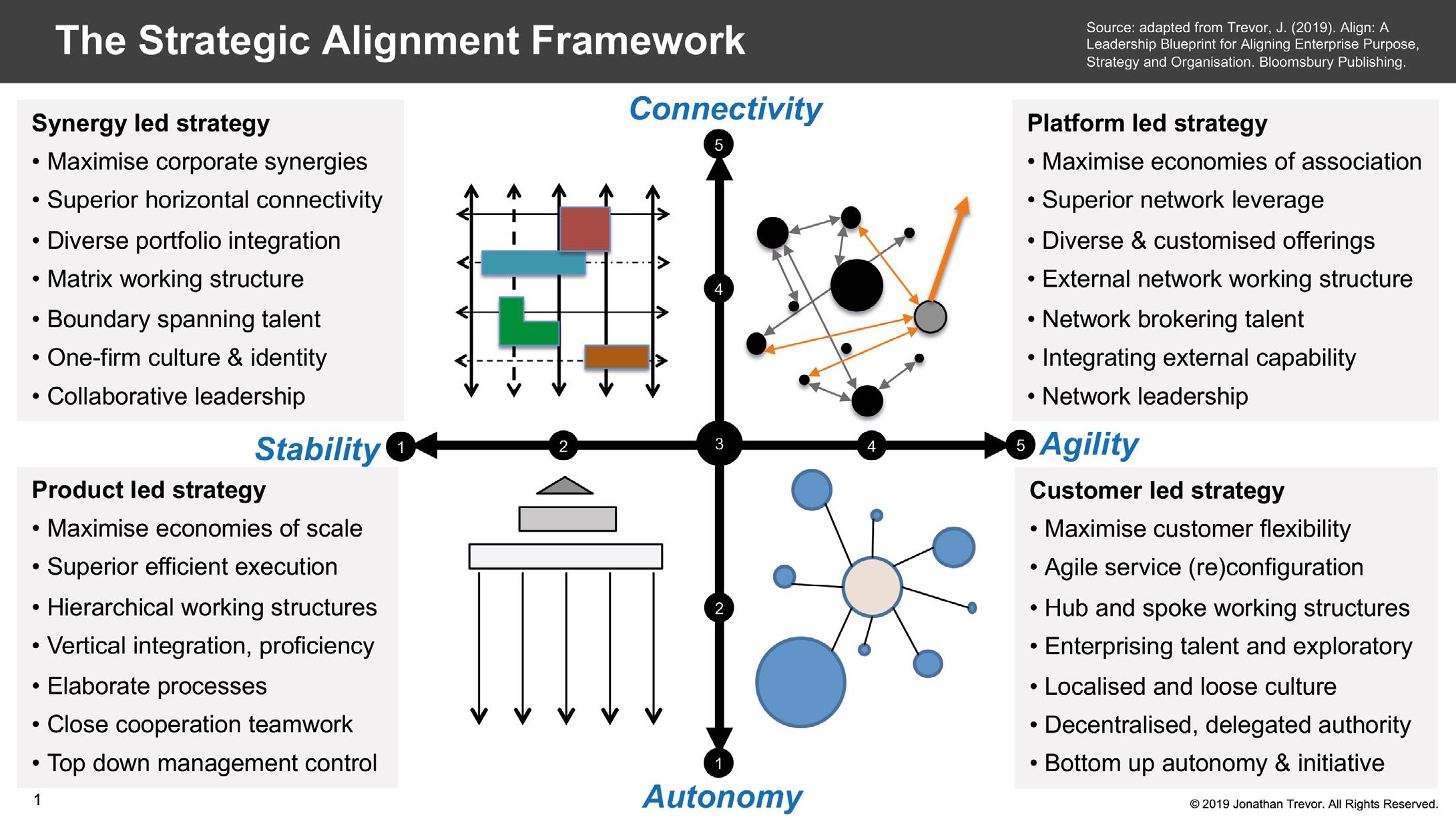
structurally to permit freedom to specialise and focus on domain-specific performance.
Conversely, connectivity enables organisations to exploit synergies internally (think between teams or departments, for example) or externally (think between partnering organisations). By strategically prioritising and developing connectivity as an organisational capability, leaders can supercharge horizontal (as opposed to simply vertical coordination) collaboration between structurally separated individuals, teams, business units and organisations. All of these enable a whole organisation to be much more valuable than the sum of its individual parts. This is because value can reside between and not simply within different organisational units (think business verticals), but only if there is connectivity between them. However, connectivity comes at a cost — specifically, higher transaction costs. Collaboration is difficult and costly if it is not necessary.
Stability, agility, autonomy and connectivity can be developed – they are acquired capabilities. However, they are also competing values across the two dimensions. Agility comes at the cost of stability and vice versa. Equally, simplicity and self-sufficiency (i.e. autonomy) are sacrificed in the interest of synergies (i.e. connectivity). Developing either stability or agility, as well as autonomy or connectivity, should be a proactive strategic choice. It is the choice to be capable in one way and not another according to a judgement by an organisation’s leadership.
The framework helps us identify four distinctive strategic approaches to competing and winning in competitive marketplaces or, for that matter, battlespaces. In order of sophistication, but also complexity, these are:
n The Efficiency Maximiser: This strategic approach emphasises stability and autonomy to achieve superior efficiency. Key attributes include standardisation of practice, close cooperation in teamwork (as opposed to wide-ranging collaborations), consistency of standards and firm rules with little tolerance for variation. Top-down supervision of performance against pre-defined targets is the dominant style of leadership. Whilst it most closely conforms to the principles of the Industrial Age bureaucracy (the ideal type of which is technically the most efficient form of organising work, according to the sociologist Maximillian Weber), the Efficiency Maximiser remains highly relevant today. Indeed, many of the world’s most successful product-based organisations conform to a model in which maximising economies of scale is as important today as it was a hundred years ago. Structurally, the Efficiency Maximiser resembles most closely the top-down, vertically integrated industrial age hierarchy (but can be multi-divisional), with close spans of control and vertical integration up and down the established hierarchical organisational structure.
n The Enterprising Responder: This strategic approach emphasises autonomy but agility instead of stability. Enterprising Responders succeed through their ability to adapt, reconfigure and customise their products and services to the changing requirements of different markets or even individual customers. Customisation, not standardisation, is the name of the game. It is achieved by ensuring high levels of autonomy in operations. Enterprising Responders
are characteristically informal, relying for success upon decentralised decision-making, flexible working patterns, outcomes-based management, and highly enterprising talent. Structurally, the Enterprising Responder typically takes the form of a hub and spoke configuration. Independent ‘front-line’ units (i.e. those closest to customer interaction in a commercial setting) are organised into often independent teams (the spokes), with a relatively weak relationship with a coordinating central function (the hub). The spokes often act independently of each other and maybe only share some form of financial relationship with the ‘centre’. Operational autonomy is sacred and fiercely protected. Many expertisebased organisations, such as law firms, consultancies, professions and universities, fit this mould.
n The Portfolio Integrator: This strategic approach emphasises horizontal connectivity between individuals, teams, divisions and organisations as its defining capability. Horizontal connectivity can take many forms, but the most common is cross-departmental collaboration to pool resources, share knowledge, or collaborate to offer customers an enhanced portfolio of goods or develop some form of innovative product or service. Portfolio Integrators are highly aligned, vertically but also horizontally, permitting the sharing of ways of working, corporate values, easier mobility of talent and one-firm culture. Structurally, Portfolio Integrators resemble a matrix, with either fixed or open teams working across vertical boundaries on a permanent or temporary basis according to threats and opportunities imposed by the external environment.
n The Network Exploiter: This strategic approach emphasises connectivity and agility as key capabilities. Instead of exploiting economies of scale solely, Network Exploiters, as the name suggests, are focused on exploiting economies of association. By leveraging networks of external resources (think partners, collaborators and allies), they can offer customers an enhanced variety of personalised products and services than if replying upon their internal resources alone. Similarly, in purely capability terms, Network Exploiters are able to leverage the intellectual capital of potentially thousands of partnering organisations to supercharge their innovation capability. The ability to forge diverse connections with other organisations, each with their own interests, capabilities and idiosyncratic ways of working, as well as nourish and leverage connections to pool knowledge strategically, are critical success factors. Structurally, Network Exploiters resemble networks, with multiple nodes (perhaps representing a partner or an ally) and a hub in which knowledge is curated through deliberate knowledge creation, exchange and application across the whole ecosystem and aligned to market opportunities.
Which is the best approach of the four described? Again, of course, it depends. Each approach possesses advantages and disadvantages. No one approach is better than the others. The two risks for any organisation are, firstly, choosing the wrong approach from the four available options (and bear in mind there are wide degrees of variation within each quadrant of Figure 1). The second, and what I observe very frequently across all sectors, is the failure to choose any approach at all and sleepwalk into the middle (a three score in Figure 1). The middle is not the most capable or a ‘best of all worlds’ option. It is the opposite. Organisations in the middle might
be described as jacks of all trades and masters of none; they are not distinctively good at anything. They have no clear direction or priorities. Uncertainty or a lack of confidence within their leadership has resulted in mediocrity with no potential for improvement.
Can this framework be meaningfully applied to the Army? Very much so – it is an annual exercise on the Army Generalship Programme. When thinking about the Army overall, or your element of it, and in the context of external threats and opportunities, consider for yourself: First, what are the requirements for organisational stability or agility? Second, what are the requirements for autonomy or connectivity?
Can you score both requirements on a scale of 1-5, using Figure 1 as a guide? How you define your ‘unit of analysis’, to use academic-speak, is important. In the case of the Army, you could choose between Field Army or Home Command. Or, better yet, between different activities, such as infantry; artillery; explosive ordnance disposal; logistics; air assault; engineering; special forces; medical; signals; intelligence, surveillance and reconnaissance; military intelligence; estates, etc. Even these are sweeping categories. Each can be broken down further, depending on how forensic you wish to be in your analysis.
How should the Army realign to change with them? What happens to effectiveness and performance if it cannot? And why would that be? Is it because of external factors, such as funding constraints and the political landscape? Or is it due to internal factors, such as culture, people and leadership? If it is the latter, are you your own worst enemy?

If you are, you are not alone. My experience of organisations generally suggests that internal factors are the greatest barriers to effective strategic realignment. However, external factors typically get the lion’s share of executive attention, possibly because they are abstract and more comfortable to discuss. Remember, 70 per cent of all change programmes fail to meet expectations due to internal and not external factors, according to the consultancy McKinsey & Co.8
Howsoever you might have answered the questions posed above, it is almost certain that Army leadership, like all leaders everywhere, will have to develop and double down on three critical leadership skills. These are:
At the same time, can you use the same questions to map the approaches of known competitors (or adversaries)? What are their capabilities? What are they trying to win at? Is it a scale play or an agile response doctrine, for example? How about partners and suppliers? What about the Ministry of Defence? What about civilian institutions? Once scored, can you further differentiate between short-term (say this year), medium-term (say two to three years) and long-term (say five to ten years)?
Once the mapping exercise is complete, what can you observe from the results? How would you describe your current approach? Do all of your team agree with your assessment? Is your approach the same as your competitors? Consider further: are you fighting the same fight or, adopting a so-called ‘Blue Ocean’ strategy, could you find an advantage by changing your approach to warfighting (for example) and embracing distinctiveness?7 Does everything you do fit neatly into one approach (i.e. one quadrant on the framework) or do you do many different things simultaneously? Are requirements changing over time? If so, how?
Do fixed images of utility, equipment and numbers of people, ranks and military units automatically aggregate in your subconscious? The easy thing is to talk about new ideas in military minds. The hard thing will be to decide, deliberately, to get the old ones out.
Ambidexterity: The ability to nourish and maintain multiple different operating approaches, systems and models (or different quadrants of the framework, if you like) simultaneously without imposing a one-size-fitsall management imprint on all or allowing crosscontamination between them.
n Versatility: The ability organisationally to move successfully and rapidly, if needed, from one quadrant to another according to the changing requirements of the external environment.
n System-level thinking: That is, to think of the Army as one enterprise, aligned behind one well-understood purpose, but with many different moving parts (i.e., a system of systems) that should be complementary but will likely find themselves in conflict without an overall strategic scheme or if they are operationally managed poorly.
So, in conclusion, consider, what enters your mind when you look at a military wiring diagram and see the terms ‘division’ or ‘brigade’? Do fixed images of utility, equipment and numbers of people, ranks and military units automatically aggregate in your subconscious? If the answer is ‘yes’, you could consider whether this is because these long-accepted terms and structures retain their relevance and effectiveness or whether we have, despite our best intentions, allowed accepted norms to draw us into point number three on the framework. To abuse an over-used cliché: the easy thing is to talk about new ideas in military minds. The hard thing will be to decide, deliberately, to get the old ones out.
James E. Kitchen Department of War Studies, RMA Sandhurst
The history of the British Army’s wars in the 20th century is a story about its divisions and corps. Whether in the mud of Passchendaele in 1917, in the fields of Normandy in 1944 or across the mountains of Korea in 1951-53, the Army’s conventional battles and campaigns were fought, won and lost by its divisional and corps formations. Yet, the last 15 years have witnessed significant debate about the importance and utility of these different formations. Generals Nick Carter and Richard Shirreff have both advocated for the centrality of the division to the army’s ability to fight conventional wars against peer competitors. Carter criticised those who mistakenly elided the roles of brigades and divisions, drawing on his experiences commanding 6 Division in Afghanistan to illustrate the distinct role that this formation performed. Shirreff went further, arguing that the division is the ‘fundamental’ capability of a modern army.1 For both generals, the ability to put a fully functioning, equipped and sustainable armoured division into the field was the minimum bar that a serious army should be able to reach. Others have suggested that it is actually at the level of the corps that most effect can be had on a theatre of operations. It is here that the ‘deep battle’ is waged and where joint activities across multiple domains are integrated. These arguments are not unique to the British Army and similar questions have been discussed across NATO and by Britain’s allies.2
Debate is undoubtedly healthy for the modern army, but there is sometimes a sense that the practicalities of warfare and the nature of the army that Britain possesses exist in a different reality from the opinions expressed in military journals and debating forums. The hard fact is that the British Army of 2024 is impoverished in terms of its divisional and corps formations. It possesses only a single armoured division (3 Division) and a light infantry division (1 Division), plus a single corps headquarters (Allied Rapid Reaction Corps) as part of NATO. In each case significant questions remain about the combat effectiveness, capabilities, survivability and sustainability of these formations.3
It is thus a pertinent moment to examine the purpose of the corps and division in the modern British Army. The question needs to be asked as to whether these formations have actually played a role in the successful conduct of war by the army across the 20th century. Do divisions and corps help achieve victory in battles, on campaigns and in wars? The answer to this question lies across three areas in which these formations provide utility to the army. First divisions and corps have an organisational function, second they play a key role in the practice and exercise of command, and third they provide and coordinate firepower.
Before discussing these themes there is an important
1General Nick Carter, ‘The Divisional Level of Command’, British Army Review, 157 (Summer 2013), 7 and 14; General Richard Shirreff, ‘Conducting Joint Operations’, in Julian Lindlay-French and Yves Boyer (eds.), The Oxford Handbook of War (Oxford: Oxford University Press, 2012), pp. 379-380.
2Steve Maguire, ‘Operational Effect: The Argument for a British Corps’, British Army Review, 174 (Winter 2019), 50-57; Jack Watling and Sean MacFarland, The Future of the NATO Corps (London: Royal United Services Institute, 2021); Robert Worley, W(h) ither Corps? (Carlisle, PA: US Army Strategic Studies Institute, 2001).
3Lieutenant General Nick Borton, ‘“Contributing in Strength” to the Alliance is Vital’, British Army Review, 186 (Spring 2024), 5; Major General Colin Weir, ‘No one said it would be easy: How we Will Fight in 2026’, British Army Review, 183 (Summer 2023), 6-10.
Since 1945 the British Army has fought at the divisional level on only three occasions in major wars: Korea in 1950-53, the First Gulf War in 1990-91 and the Second Gulf War in 2003
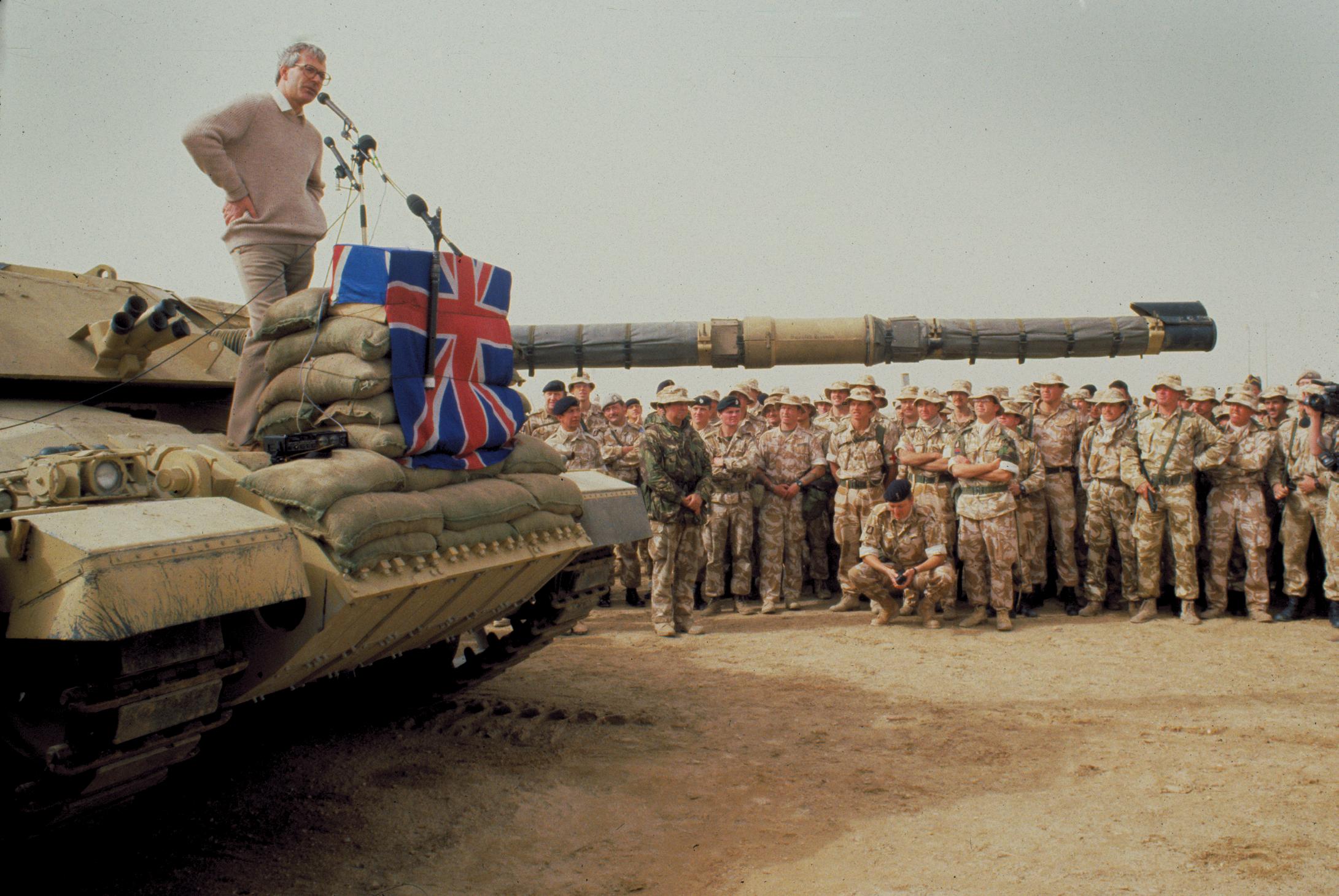

The links between the age of total war and today’s conflicts are startling. The battlefields of the Russia-Ukraine War since 2014 would be recognisable to soldiers who fought across Europe a century earlier, not just in terms of the character of trench warfare.
By 1917-18, the technological innovations stoked by the Great War had produced a battlespace on the Western Front – the complexities of which we still live with today.
contextual caveat to note when examining the British employment of divisions and corps since 1914. Any study of divisions and corps as instruments of warfighting inevitably leans towards the period 1914-45, the age of industrial total war. During the First World War the British Army and its imperial and Commonwealth elements employed 118 divisions and 34 corps; in the 1939-45 struggle this figure was only slightly lower with 107 divisions and 23 corps used, although at a more global scale. In contrast, since 1945 the British Army has fought at the divisional level on only three occasions in major wars: Korea in 1950-53, the First Gulf War in 1990-91 and the Second Gulf War in 2003. Although the Falklands saw a divisional headquarters deployed the campaign was not structured as a divisional activity and was instead conducted at brigade and battalion level. The only use of a corps in a conventional conflict in this period was the brief role of Lieutenant General Hugh Stockwell’s II Corps in the planning of the 1956 Suez intervention. Corps and division headquarters were not idle after 1945, being employed to manage numerous counter-insurgency campaigns. Principally, during the period from the Second World War to 1991, the army’s formations concentrated on training and preparing for a major war in central Europe against the Soviets under the auspice of the British Army of the Rhine.
The shift here is strikingly clear. 1914-45 was an era in which divisions and corps were integral to the conduct of the two major wars waged by Britain on land. Since 1945, these formations have trained for war, but seldom been used, and when they have been employed it has been in conflicts of much lower intensity and significantly shorter duration. If one wishes to think about warfighting by divisions and corps against peer-competitor opponents, then attention inevitably turns to their employment in the two world wars.
This should not be seen as an obscure historical point as the links between the age of total war and today’s conflicts are startling. The battlefields of the Russia-Ukraine War since
2014 would be recognisable to soldiers who fought across Europe a century earlier, not just in terms of the character of trench warfare. By 1917-18, the technological innovations stoked by the Great War had produced a battlespace on the Western Front – the complexities of which we still live with today. To take a few examples, this was an operating environment dominated by firepower that was becoming increasingly precise in its application. It was also a battlespace subject to surveillance by a diverse array of aerial systems, in which movement behind and across it was increasingly motorised and mechanised, and in which the demands of the firepower systems employed posed vast logistical problems of sustainment. Most strikingly, by the second half of the Great War the contest across the electronic spectrum (in terms of detection, deception, interference and concealment) was of growing significance. The Second World War saw the refinement and acceleration of this technologically driven combined arms warfare, as the employment of air power and armour became central to the conduct of operations. The battlefields of the 2020s are thus an iteration of shifts that have their roots in the industrialisation of states and societies in the 19th and 20th centuries.
In the complex conventional battlespaces of the 20th century the divisions and corps of the British Army played a crucial role. The first of which was in terms of the organisation they brought to mass armies trying to conduct industrialised warfare. In the First World War the British Army grew to a force of 3.8 million personnel, that of the Second World War reached 2.9 million soldiers. Both wars were thus characterised by the vast scale of human resources mobilised. Armies of such size required internal structures to manage them, not just on operations but in terms of resourcing, logistics, personnel and administration. Industrialised war also involved the application of mechanised violence. To take just one weapon system, the tank, this required a crew to operate it, fuel to run it, a steady supply of replacement parts for those damaged in action and ammunition to ensure it could have a combat effect, to say nothing of the skilled workers, factory production
lines and raw materials needed to build it. Modern war is thus as much a bureaucratic and managerial activity as it is a physical one, particularly if it is to be waged at scale, for long periods, across large geographic distances and by machines fighting alongside people. Although the origins of the corps and division lay principally in the growing human resources of armies in the 18th century, it was the industrialisation of war in the first half of the 20th which saw these formations come into their own. Without divisions and corps the British Army could not have met the organisational challenges the two world wars posed. These formations allowed complex operations to be broken down into digestible chunks that commanders and their staffs could then plan for and manage.
Corps and divisions gave the British Army the organisational coherence to wage modern conventional wars. There was a difference, however, in the temporal and geographical span of command that divisions and corps covered. The division tended to be a relatively fixed entity, responsible for a narrower and more clearly defined piece of terrain. It had assets assigned to it for long periods and this gave it a degree of structural rigidity and continuity. Different types of divisional formation were created to deal with specific tasks often defined by the contextual setting, such as armoured, infantry or mounted divisions. The division also had a clear sense of identity, sometimes reflecting regional affiliations such as the 53rd (Welsh) or 54th (East Anglian) Divisions, or national recruitment patterns such as the New Zealand Division. Michael Howard, the noted military historian and veteran of the Italian campaign in 1943-45, described the division as having a ‘corporate identity’ that was often created and reinforced by a ‘strong-minded commander’. Major General Douglas Wimberley’s 51st Highland Division and Francis Tuker’s 4th Indian Division provide apposite examples of this.
In contrast, the corps was a much more flexible formation structured and organised to deal with the task it faced; its span of command was thus subject to constant change, growing and falling in size as the circumstances dictated. IV Corps in India during the Second World War provides an example
internal security duties as the ‘Quit India’ nationalist movement gathered pace.4 The administrative and organisational challenges faced were considerable, often stretching beyond the purely military realm, and the corps headquarters and its subordinate formations proved critical to meeting them.
The divisions and corps that waged Britain’s wars since 1914 were more than just organisational entities, bringing order amidst the chaos of war, they were also fundamental to the effective conduct of battles and campaigns. These were the formations that enabled generals to exercise command. Division and corps perform a crucial role in the planning and conduct of battles, through the provision of a commander and their staff in the formation headquarters. This headquarters capability provides the intellectual horsepower needed to make armies function in the complex operating environment of conventional war. The commander and their staff carry out a variety of roles, including the analysis of problems, development of a variety of solutions, decisions on potential courses of action, refinement of a plan, resourcing of that plan with subordinate units, coordination across and above the division or corps with sister and parent formations, and then the enacting of the plan. While doing all this, the staff also learn from the events that occur in order to refine their decision making and the conduct of future operations.5
For an example of the value that formation headquarters could provide to the successful conduct of operations we can turn to the British campaign in Sinai and southern Palestine in 1916-17 against the Ottoman Empire. The defence of the Suez Canal in 1916 had rested on a collection of infantry divisions grouped under a command called Eastern Force. Once the tide of the conflict turned in Britain’s favour, the pursuit of retreating Ottoman forces across the Sinai in the second half of 1916 required the creation of a new, more mobile formation of mounted divisions, known as the Desert Column. The army that arrived at the gates of Gaza in spring 1917 was a mixture of these two formations and possessed an ad hoc command structure, with no clear sense of whether the commander of the Desert Column or Eastern Force was in charge of operations. The result was confusion, conflicting orders and squandered battlefield opportunities that led to two disastrous defeats in March and April.
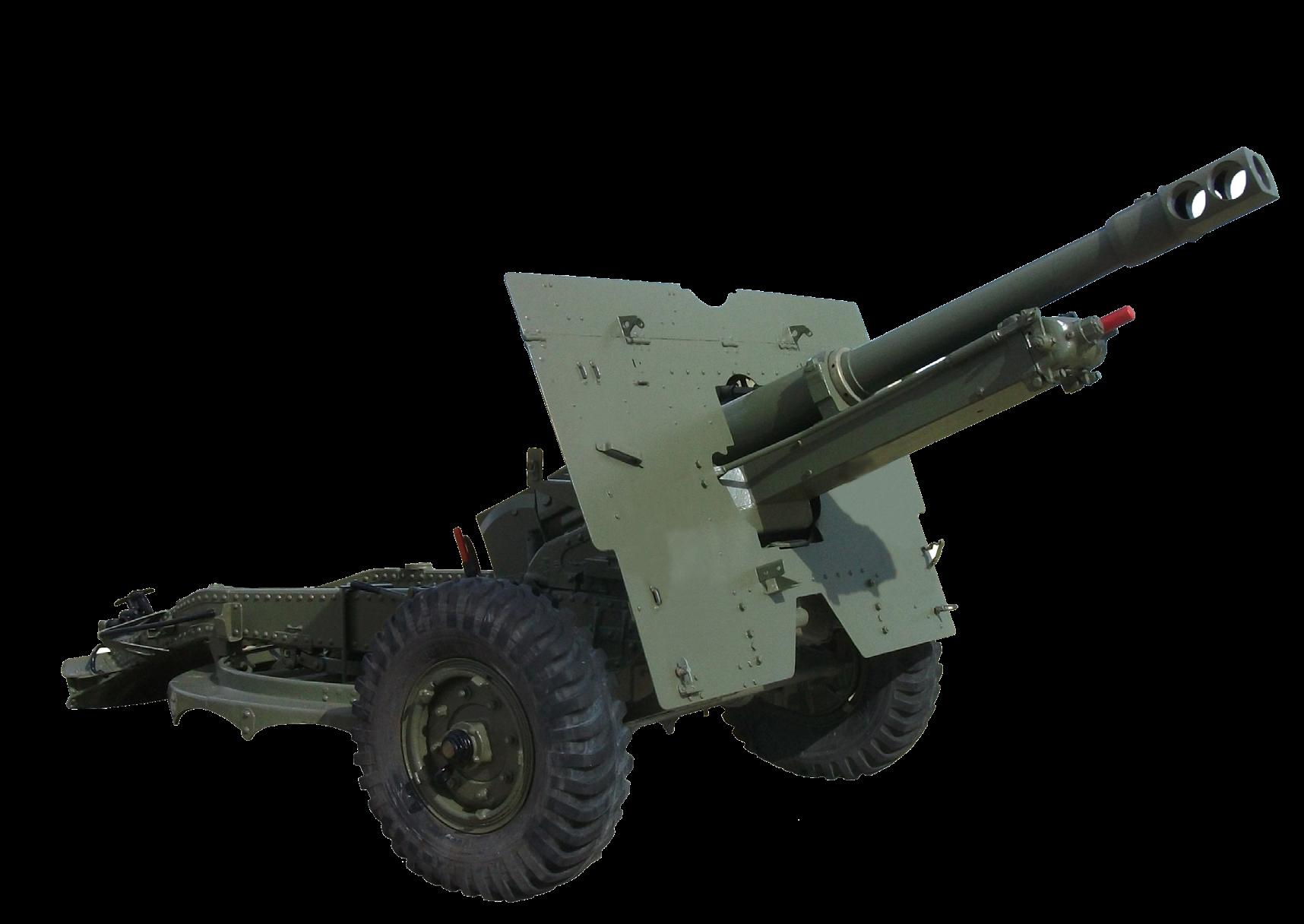
The arrival of a new theatre commander, General Edmund Allenby, in June 1917 saw the army in southern Palestine undergo an organisational transformation as Western Front systems of army management were introduced. His first act was to abolish the ad hoc formations
The corps owned, massed and directed the heavier guns that gave 20th-century warfare its character, and the corps artillery plan was often the key to unlocking defensive positions and producing the conditions for manoeuvre
and to create three new corps commands: XX and XXI Corps, and the Desert Mounted Corps. These three corps provided headquarters and staff officers – including veterans and experts from France and Flanders – who could now begin tackling the problem of dislodging the Ottomans from their strong defences around Gaza. They enabled Allenby to devolve parts of the operational and tactical planning to these formations, which could then help coordinate his seven infantry and three mounted divisions across a broad front. XX Corps thus dealt with the task of breaking into the Ottoman defences at Beersheba and rolling up the centre of the defensive system, the Desert Mounted Corps handled the envelopment of Beersheba and subsequent exploitation planning, while XXI Corps was tasked with fixing the defenders of Gaza. The result was the breaking apart of the Ottoman defences in an eight-day battle that began on 31 October. The ensuing collapse of the Ottoman forces and the ability of the three British corps commands to then transition to a pursuit operation saw Allenby drive the enemy northwards and march into Jerusalem on 9 December. Formation headquarters, in this case at corps level but the same is true of divisions, thus provide both intellectual capability and capacity to deal with the complexities of planning and waging conventional operations against a tenacious opponent.
Corps and divisions were more than just headquarters for the planning and management of battles and campaigns, they could also shape their conduct. During the First and Second World Wars they did so principally through the provision and coordination of firepower. Warfare since 1914 has been the story of the provision of mass, and ultimately precision, fires across and beyond the battlefield. The division became an increasingly firepower rich organisation during the First World War, and the advent of the armoured division in the Second World War only accelerated this trend.6 To an even greater extent, the corps was the provider of overwhelming amounts of firepower that could shape the close battle but also influence the deep, mainly through the conduct of counter-battery fires. The corps owned, massed and directed the heavier guns that gave 20th-century warfare its character, and the corps artillery plan was often the key to unlocking defensive positions and producing the conditions for manoeuvre. Massed and intense artillery fire was the main way that corps and divisional commanders could shape the course of a battle, alongside the introduction of reserves. Indeed, it can be argued that British operational art has been defined by the application of firepower, rather than the myopic obsession with manoeuvrism that has dominated since the late 1980s.7
as ‘colossal cracks’. To organise these 21st Army Group in North-West Europe in 1944-45 created Army Group Royal Artillery (AGRA) formations, temporarily assigned to corps for particular offensives. These grouped together heavy artillery pieces ranging from 9.2-inch guns to 155mm howitzers, as well as field artillery (the ubiquitous 25-pounder) and heavy anti-aircraft artillery assets; these formations also provided artillery staff to coordinate and direct this enhanced firepower. Usually, two AGRAs were assigned to a corps for an offensive. The single largest application of firepower by the British Army occurred during Operation Veritable in February 1945. Here XXX Corps employed five AGRAs in a highly sophisticated fire plan, with more than 1,000 guns firing half a million rounds (over 8,000 tons of ammunition) at the Germans.8 This was the ultimate expression of the British Army’s way of warfighting by 1945, the massed application of coordinated firepower, ensuring that machines rather than flesh did as much of the fighting as possible. Formation headquarters at division and corps level enabled such destructive firepower to be brought to bear in a controlled and precise manner on the modern battlefield.
The history of warfighting in the 20th century demonstrates the enduring utility of the corps and division
The history of warfighting in the 20th century thus demonstrates the enduring utility of the corps and division across three themes. First these formations provided organisation and structure to the mass citizen armies that are the essence of modern war. Second, they enabled command to be exercised, providing the commander with a staff and headquarters to plan and conduct operations. Third, they were the providers and coordinators of the massed firepower that defined and made so successful the British approach to warfare in 1914-45. Corps and divisions were thus organisational entities, fundamental contributors to the army’s intellectual capability and capacity, and the deliverers of its combat punch.
It might be argued that in the 21st century on a battlefield defined by dispersion to avoid detection, that many of these activities could be pushed down to the brigade level. This is an argument that the army has been engaged with since the advent of tactical nuclear weapons in the 1950s rendered concentration very dangerous.9 However, this only highlights the extent to which the three themes above are interlinked. A brigade as a relatively small formation can disperse and hide effectively, but it lacks the firepower punch to decisively shape matters at the tactical and operational levels. If it is to do so it needs to be given more assets, particularly firepower, to control and direct. Doing so risks overwhelming its meagre command resources in the brigade headquarters; if these are
The scale of firepower resources that divisions and corps coordinated and directed in the era of total war is often forgotten, and can seem remote from a 21st-century army utterly impoverished in this respect. Field Marshal Bernard Montgomery in particular made the application of massed firepower integral to his operational technique of waging limited corps-level set-piece offensives, what he described
6Shelford Bidwell and Dominik Graham, Fire-Power: British Army Weapons and Theories of War 1904-1945 (London: George Allen and Unwin, 1982).
7Andy Simpson, Directing Operations: British Corps Command on the Western Front 191418 (Stroud: Spellmount, 2006); Stephen Ashley Hart, Montgomery and “Colossal Cracks”: The 21st Army Group in Northwest Europe, 1944-45 (Westport, CT: Praeger, 2000); Hew Strachan, ‘Operational Art and Britain, 1909-2009’, in John Andreas Olsen and Martin van Creveld (eds.), The Evolution of Operational Art: From Napoleon to the Present (Oxford: Oxford University Press, 2011), pp. 96-136.
8This paragraph draws on Stephen Ashley Hart, ‘British and Canadian Corps Command during the 1944-45 North-West Europe Campaign’, in Orchestrating Warfighting: A History of the British Army’s Corps and Divisions at War since 1914 (London: Routledge, 2024).
9David French, Army, Empire, and Cold War: The British Army and Military Policy, 1945-1971 (Oxford: Oxford University Press, 2012).
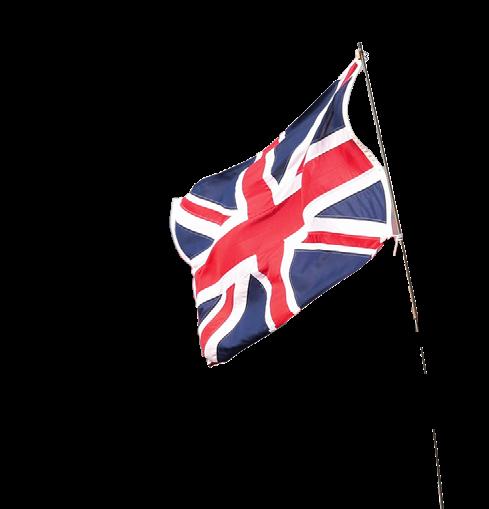
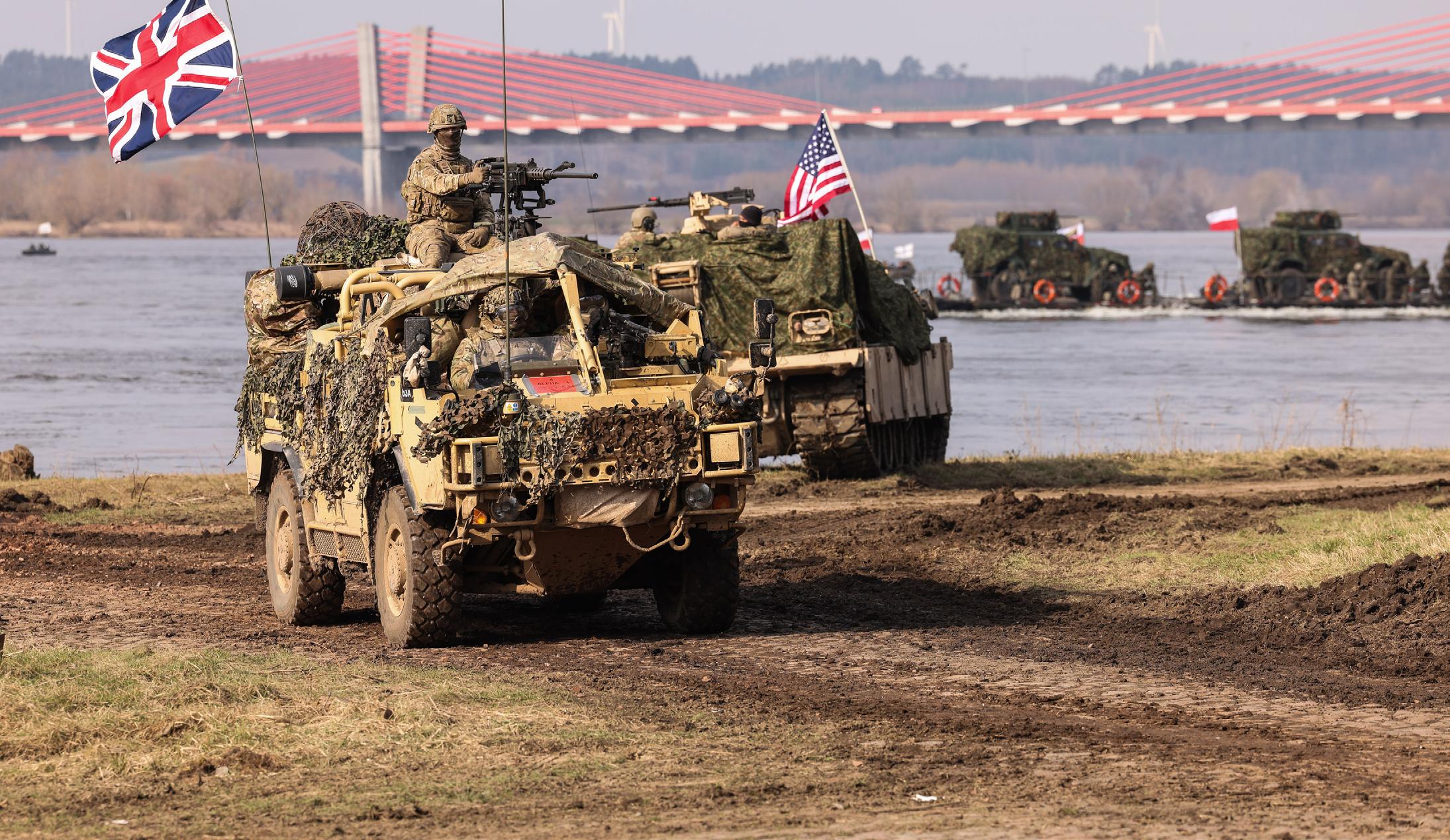
Given the resources of the British Army it is unlikely that Britain will be a major, directing player in a future war involving NATO. Britain, as a middling power, should aim to use its corps and divisional formations to achieve strategic effect through delivering tactical and operational outcomes that are fully resourced as part of a wider coalition effort.
increased then it becomes a de facto divisional formation but without the training for its staff and commander on how to fight at such scale. The result would be organisational chaos and almost certainly the mental exhaustion of the commander and staff in an intense fight with a peer-competitor enemy.
Modern warfare since 1914 is bloody and costly, to sustain it over time takes manpower and resources. The division and corps formations provide the mass and endurance capability to meet these problems. They can organise for the complexities of managing mass armies in war, they can be used to command them on operations, and they can provide and direct the firepower assets that make them effective. The division and corps have been and remain at the very heart of waging conventional warfare.
A final observation can be drawn from the British experience of warfighting since 1914 with divisions and corps. That is the fact that from 1914 to 1953 we should not really talk about a British Army but instead a British Imperial Army. The forces that waged the First and Second World Wars were drawn from across the British Empire’s colonies, Dominions and home nations. As Douglas Delaney has argued, through the development of doctrine, training and liaison systems this imperial entity was able to fight effectively.10 In terms of the employment of divisions and corps in the 21st century, the British Army needs to better understand this imperial past. Its central lesson is that Britain goes to war as part of alliances and collaborative structures. It might be worth the army in the 2020s thinking about that imperial experience not in terms of lessons for the British as the directing entity, but as one of the collaborators within a multinational collective. There may be more to be gained by looking at the experience of Australian, Canadian, New Zealand, African and Indian formations at divisional and corps levels as part of the British Imperial Army
in the two world wars, than in looking solely at the British experience. Britain as part of NATO in the 2020s has much more in common with New Zealand in 1914-18 or Australia in 1939-45 as parts of this imperial army than it does with the British experience of those wars. Perhaps there are lessons to be learnt from the New Zealand approach to the First World War: providing a single division that was maintained at full strength, was fully equipped and remained at the highest quality for the whole duration of the war. Alternatively, Britain could look to the Australians in the Second World War, where the I Australian Corps took on responsibility for a discrete part of the South-West Pacific theatre in Borneo in 1945, albeit reliant on US sealift and aerial support. The apotheosis of the imperial army project came in Korea, where Britain deployed the 1st Commonwealth Division. This brought together British, Canadian, Australian, New Zealand and Indian units in order to produce a functional division that could endure the rigours of the campaign. The point here is that given the resources of the British Army in the 2020s it is unlikely that Britain will be a major, directing player in a future war involving NATO. Britain, as a middling power, should aim to use its corps and divisional formations to achieve strategic effect through delivering tactical and operational outcomes that are fully resourced as part of a wider coalition effort. These formations – through their organisational functions, command capabilities and firepower assets – might well allow us to be good allies and partners on a future battlefield.
The ideas discussed in this article are the product of an eight-year research project run by the War Studies Department in the Faculty for the Study of Leadership, Security and Warfare at the Royal Military Academy Sandhurst in collaboration with the Allied Rapid Reaction Corps. An edited volume based on this research will be published by Routledge in summer 2024 and is entitled Orchestrating Warfighting: A History of the British Army’s Corps and Divisions at War since 1914. The volume contains 18 chapters covering the conduct of corps and divisional operations during the First and Second World Wars, Cold War, and into the 21st century.
Prof Matthias Strohn Head of Historical Analysis, CHACR
This Ares & Athena set out to examine whether the traditional (and current) method of structuring an Army is still relevant and offers the best way to deliver the physical component of fighting power. As always, looking back into history often offers the best starting point for analysis of current and future problems. The articles by Doctors Latawski and Kitchen provide this necessary framework, but they also offer some interesting food for thought. This is particularly evident when arguing that the current British Army should orientate itself not on the lessons and traditions of past glory, but should take on board the lessons learnt from the junior partners of the world wars. The current challenges and structural contexts were explored by Colonel Chandler and Professor Trevor. Capabilities first. Structure second is the title of Professor Trevor’s contribution. While this should be obvious and clear, the articles in this Ares & Athena have shown that armies can struggle with this basic concept. Is it intellectual inertia, the general persistence of old and ‘good ideas’ or the genuine realisation, thought through as a first order question, that the current structures are still considered the most efficient ones for the Army of the 21st century? A look at allied peer nations offers some insight into this, and it also makes it possible to compare the British approach with that of those nations that face similar challenges – be these purely military, political or economic. It is therefore very good and relevant to have the analysis of two allied armies presented in this Ares & Athena, one on France by Brigadier Dr Dirou and one on Germany by Colonel Lanzinger. Once again, these articles show that armies tend to transform only slowly. The oftenused comparison to the oil tanker, which changes direction at a very pedestrian pace, is very fitting here. History has shown that armies tend to change more drastically after a major defeat. Thankfully, NATO and the West have not suffered such a major and strategic defeat since the beginning of the most successful defensive alliance in history. This is reassuring, but it also means that there is the potential for intellectual inertia. In some ways, the German approach is the most ‘radical’ one described in this edition, with the re-structuring of the German Army into three divisions (light, medium and heavy). The inverted commas around the term radical are needed, however, because the changes to the structure can be described more as a linear development rather than a fundamental re-
design. And we are still talking ‘divisions’ as a given concept and an accepted norm. The question remains whether this new structure is the consequence of deep analytical thought or the manifestation of external restrictions and pressures, such as finance and a general lack of equipment.
Hopefully we have provided the reader of this Ares & Athena with food for thought, but, surely, little contained in the foregoing pages has been genuinely controversial. It is therefore important to conclude this edition with a challenge. In a conceptual world of ‘snow dome brigade combat team manoeuvre’, do divisions and corps provide a still-relevant, timeless, model as the best method of supplying those newlook formations with the support (logistics, indirect firepower, direction, intelligence and information, security, connectivity, etc) that they will need? If so, fine; but then let us articulate the why and the how of this, before we move on. This must not be presented as a given assumption, but as an explained first-order statement. If we are unable to do that, then we must, first and before we move ever onwards with re-designing our army, properly address that first-order question. We have to ask ourselves how we might provide the conductors of the full orchestra of war better if not in the guise of Corps and Divisions. As General Sharpe stated in the introduction to this Ares & Athena, we offer no answers, but we aim to stimulate thinking and debate in order to enhance the conceptual component to fighting power, and with this edition we also hope to make a contribution to future force design. If the articles have got the reader thinking – and asking penetrating questions about the base assumptions concerning the structure of the future Army – then we have achieved our aim.
In a conceptual world of ‘snow dome brigade combat team manoeuvre’, do divisions and corps provide a still-relevant, timeless, model as the best method of supplying those new-look formations with the support that they will need?
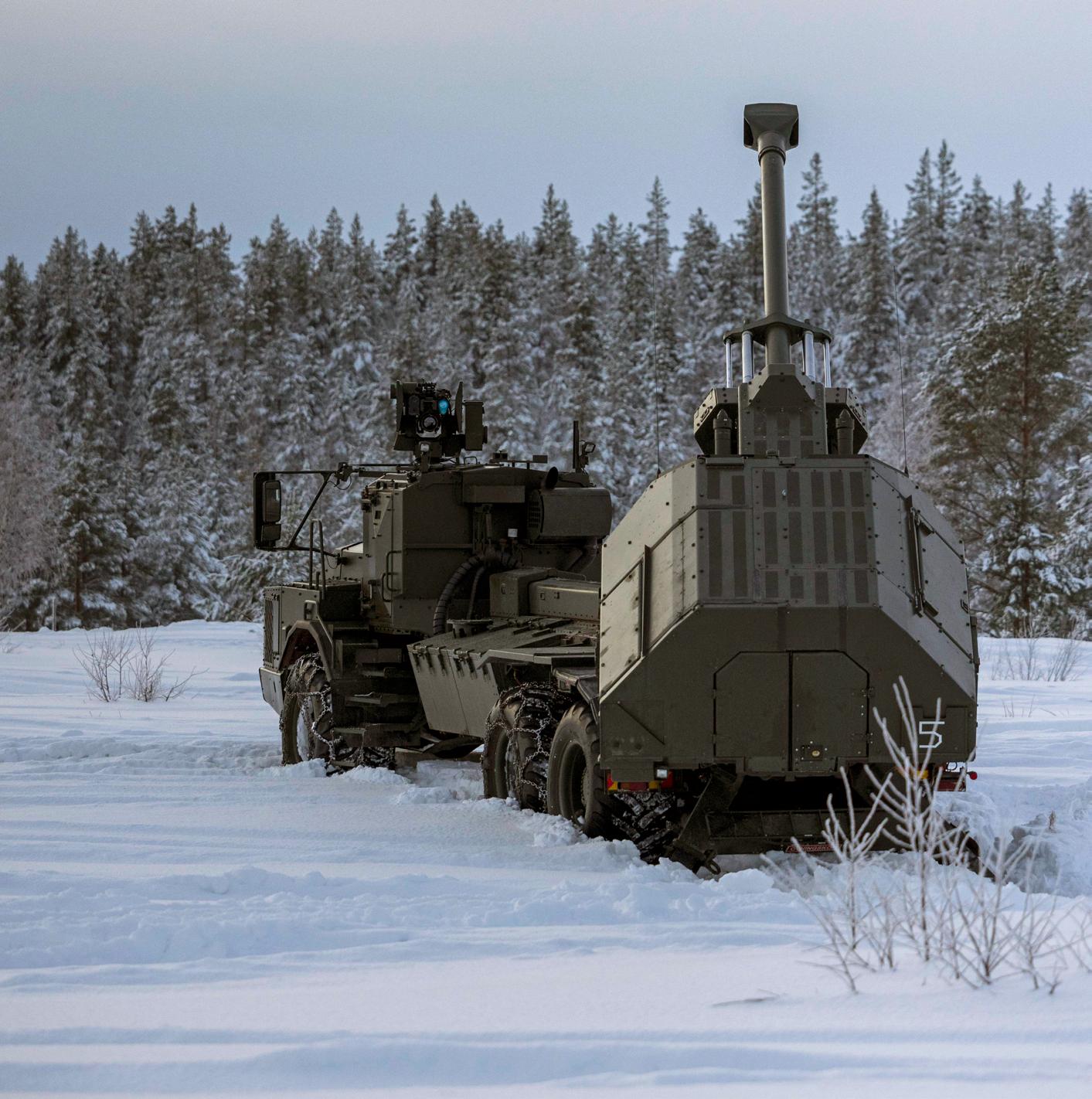

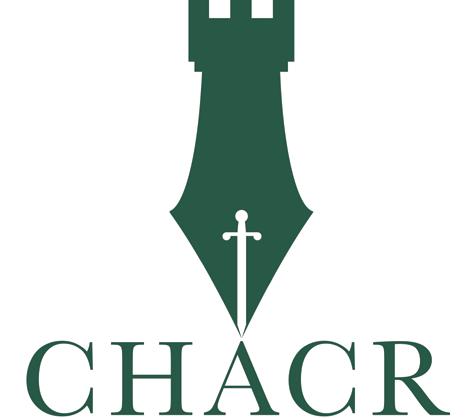
To conduct and sponsor research and analysis into the enduring nature and changing character of conflict on land and to be an active hub for scholarship and debate within the Army in order to support the development and sustainment of the Army’s conceptual component of fighting power.